|
In the siege to the city of Tyre, facing fierce resistance, Alexander the Great had a dream with a satyr dancing furiously. The Alexander official oneirocritique, Aristander conducted a astute reading of the dream, saying that the satyr was not a symbol or an image but a phrase: “sa Tyros”, Tyre is yours. The interpretation nears the dream field and transforms the oneiric activity, surpassing the mere image of vague symbolism. The old dream of Alexander and it’s translation by Aristander could have come from any of the Thomas Strømsholt tales, an extraordinary player, performer, creator and replicator of dreams. His books, O Altitudo, “Inflammable Materials” (from the collection Infra Noir) and Splinters of Horn and Ivory have a curious resonance between the beauty of editorial solutions and the wonder of narrative constructions. The brief narratives of this books – close to the Baudelaire petits poèmes en prose and the surrealists récits, but far away because the unique formal and narrative approach by Strømsholt – changes before our eyes full with astonishment, as the everyday dream that goes beyond the hours of sleep and remains vivid in our consciousness.
Most of the pieces were fashioned from entries in my dream journal, recordings of dreams that only needed a little polishing to make them enjoyable (I hope), while others were the daydreamy germinations of whatever came to my mind at the moment of writing, hence the shifts in tone, style and content. But I did work toward a unifying theme for the book, that theme being, as you so correctly identify it, metamorphosis of some kind or other. We tend to view the world as made up of hard and clearly delineated objects and ourselves as solid bodies with fixed identities. A whole other way of viewing existence is presented in the Metamorphoses, a poem that I love very much and keep returning to. Not only does Ovid tell of “bodies changed to various forms” but the poem itself has a transformative power: in the end the poet is made immortal, transmuted. I believe that art – which is always a transformation of nothing into something or of something into something else – has the power to effect and change reality. “Coccinella” may be read as the possibility of transcending such notions as identity, gender and, ultimately, the human condition.
In the “The Wandering Thesauri,” which owes something to the universal libraries of Kurd Laßwitz and Borges (among others), there’s an allusion to Dada and their sane revolt in an absurd and ruined world run by lawful thieves and mass murderers. It’s in the nature of art to transgress in one way or another. Some books are cloaked criminals intent on knifing, subverting and perverting our hegemonies, categories and preconceptions; this, it seems to me, is a very noble endeavour. Even the most innocent looking books may contain some form of transgression even if it is only to engage the reader in an imaginary world for a brief period of time, a sort of temporary lapse of sanity. In my “commonplace book” there are many quotations extracted from Machen’s immensely diverse works. One quotation, pertinent to your question, reads: “For literature, as I see it, is the art of describing the indescribable; the art of exhibiting symbols which may hint at the ineffable mysteries behind them; the art of the veil, which reveals what it conceals.” Machen’s style is one of great clarity and measured obscurity. As we’ve all experienced, twilight and darkness activate the senses wonderfully; by leaving hints and suggestions the writer encourages the reader to fill in blank spaces, to populate the shadows and to slip through the cracks.
In the case of Inflammable Materials, if I remember correctly, Dan Ghetu had specifically asked for very short prose pieces. I’d made a few attempts in that style before, and although not quite successful, it was enjoyable. Picture, if you will, a masticating cow and you’ve got a good illustration of how I usually approach a short story, writing draft upon draft, endlessly revising, etc. But as I said above, the vignettes are mostly impromptu pieces even if it’ll take hours, a whole day maybe, before a particular vignette is finished. Perhaps the almost frivolous spontaneity of their conception loosens the constraints of my usual conventional manner, the style shaping the content. That aside, I love brief narratives and prose poems. The latter, Huysmans tells us, is Des Esseintes’ favourite form of literature because it should ”contain within its small compass and in concentrated form the substance of a novel, while dispensing with the latter’s long-winded analyses and superfluous descriptions”. Huysmans, no stranger to luscious verbosity, may be having fun at his own expense here. It is often in the ”long-winded analyses and superfluous descriptions” that the novel really comes to life; cut it away and you’re left with an empty house, a barren protestant church rather than a gorgeous cathedral. Certainly, there is no need to weigh the novel against the prose poem in order to appreciate the latter. A short piece may evoke or suggest a greatness that belies its scant length just like an impressionistic piano piece may linger in our minds as long as a symphony, albeit in a more vague fashion. Of the pieces in Inflammable Materials and Splinters only a few approach the prose poem in style or tone. The operative word here being “approach,” for writing poetry is far beyond whatever literary skills I may have. I prefer calling these prose pieces vignettes which is just a fancy name for prose below 1000-1500 words. That said, the prose poem and the vignette might share the same objectives: to capture or exteriorise a flash of illumination, compress a dream to its essentials, convey a joke or anecdote, etc. The very briefness of the vignette is an attraction too. I might be dead tomorrow but at least there’s a chance that I’ll be able to complete a vignette before day’s end (or so I tell myself). Although this kind of reasoning is quite absurd (followed to its logical conclusion one ought to refrain from initiating any action whatsoever), it is a comforting thought both as a writer and as a reader. To leave things unfinished is as deplorable a prospect as it is probably unavoidable.
I’m delighted that “The Legend of Melancholic Prince” should evoke a marriage between Wilde and Baudelaire; I never thought of it that way but there’s certainly a whiff of decadence about it (and “The Glowing Heart” as well). The pop music references are far more explicit. Bowie’s music, which has been in my ears since I was about 10 years old, is a continual influence on my writing; a single line of his can conjure up whole new ideas and visions. As for Leonard Cohen, he just appeared in my dreams three nights in a row; in each dream he delivered an aphorism or bon mot (spoken in his wonderful smoky voice). But I’m evading your question for the simple fact that I do not know how to answer it. I suppose that some references just occur as a natural element in the fabric of the story, while others are carefully weaved into the story in order to pay tribute, acknowledge an influence, or to suggest possible readings to the reader.
“No bridge exists between the transcendental world and nature’s reality,” as Bruno Schulz so succinctly put it. Schultz, in fact, is one of the most accomplished oneiric authors I can think of. In his stories the common Platonic-Cartesian dualism dissolves: reality is transmuted, made phantasmagorical, made real. I cannot claim Schulz as an influence though, only as a model. To speak of influences is always a dubious matter. My perception of dreams is most likely a hodgepodge of philosophers and authors, some popular, some odd, and, dating back years, some forgotten. Dreams seeping into waking, blurring or corroding the apparent boundaries between the two states are certainly a motif frequently met in literature. Good stories share with dreams the quality of being perceived or experienced as truer than what occurs in what is usually denominated “reality.”
When or if the right idea for a more extensive or substantial story presents itself, I’d probably follow its scents like a lovesick dog even though the transubstantiation of idea into words is too often an extremely frustrating process that ends in failure and despair. My one and only ambition is to write a good story – just one – and the length of that story doesn’t really matter. Interview conducted with support from PNAP-R program, at the Fundação Biblioteca Nacional (FBN).
23 Comments
In a recent past, a very large History of the World seemed a good idea: authors like HG Wells sought audacious narrative synthesis of the multilayered historical process. The efforts were elegant or eventually reductionist in the task of extracting a logic in the History, a process that has certain essential disorder, as said Jean-Paul Sartre. In fact, a possible criticism about universal stories, perhaps the most striking critic, is precisely the approach of historical fact, because the universal historian appreciates the wonder facts and great names in a seemingly continuous line of progress. However, there is another History, populated by people and events unjustly ignored, remote or marginalized. This historical otherness, that is often not even known, emerges in a unique form in the works of John Howard. The marvelous fiction of Howard addresses fantastical phenomena and philosophical questions in the edges of our history and cognitive universe – sometimes in totally imaginary regions, as is the case of his most significant topographical creation, Steaua de Munte, a exhilarating region of imaginary Romania that can be visited in his latest novel, The Lustre of Time. Even the supernatural in Howard creations is subtle one, almost imperceptible – the uncertainty is the poetic weapon of John Howard in his antithesis of universal history, an imaginary history, unique and terrible.
A very particular approach to urban topology, including the development of an entirely fictional town, Steaua de Munte, emerges in your works. This imaginary city is extraordinary, an entity that continuously develops itself over several short stories and novels, with its cafes, hotels, universities, hills, houses, buildings. It's an imaginary space equally or more extraordinary that William Faulkner's Yoknapatawpha County or Arkham by H. P. Lovecraft. So what would be the point of creating a fictional territory in such a distant place, covered in a peculiar picturesque mythology, Romania? What have been your sources and conceptual and imagery sources for the construction of Steaua de Munte? Modern Romanian history has interested me ever since I came across a contemporary account in John Gunther’s Inside Europe (1936, and subsequently much revised and reprinted). This was when I was still just a teenager and there seemed no reason for Communist rule behind the ‘Iron Curtain’ not to last for ever. I found Gunther’s portrait of the country as it had been nearly fifty years before my time to be utterly fascinating. Romanian politics were byzantine, Ruritanian, and murderous. And the country’s leaders – especially the flamboyant king, Carol II – seemed larger than life. John Gunther was an American newspaper reporter, a foreign correspondent in Europe for many years before and after World War II. He became one of those authors whose books I always look for. I have a shelf of them. I never forgot Gunther’s vivid and accurate summaries, and when Ceausescu and the other Communist leaders fell, it came as no great surprise to find their countries carrying on, in many ways, from where they had left off in the 1940s. There is so much in the histories of that part of Europe which seems almost operatic or something out of a television drama – if it had not been real, it could only be believed as fiction. But that is easy for an outsider such as me to say: these people were also responsible for ruining the lives of so many of their people. Fiction can examine the dark places – and should do. The opportunity to visit Romania came in 2009. The previous year Dan Ghetu’s Ex Occidente Press of Bucharest had published The Rite of Trebizond and Other Tales, a collection of stories mostly written in collaboration with Mark Valentine. Dan had read “The White Solander” – one of the tales of The Connoisseur that Mark and I had written together, and which had a Romanian background. Then Dan invited Mark and Jo Valentine and me to visit Romania. Dan and his wife were generous and painstaking hosts, driving us around much of the country in an exhilarating tour which nevertheless ended all too quickly and still left too many wonderful places unvisited. We crossed the mountains into Transylvania and stayed in the old cities of Sibiu and Sighisoara, and these were the main sources for my city of Steaua de Munte. But in most respects Steaua de Munte is a unique and special place, not dependent on anywhere else, and is what I, as sole proprietor, choose to make it – and remake it. Novels and series of stories set against a common background have always appealed to me, especially when the setting develops and changes, with various different aspects being revealed at various times, and yet which also leaves much to the reader’s imagination. Characters come and go (and families and relationships are vital) but the background scene, even when it changes, does provide a level of continuity against which new stories unfold and have consequences for the unwritten future. The protagonist of "The Fatal Vision" (the longest narrative of the book Cities and Thrones and Powers) and The Lustre of Time, Dr. Cristian Luca, embodies something of the archetypal figure: the modernist architect/urban planner acting as a demiurge, fighting world authoritarian and vulgar perceptions. This archetype has its own history, dense and multiform, and came even to the cinema through The Fountainhead, Ayn Rand's novel, adaptation directed by King Vidor in 1949. Luca was your personal view of this archetypal figure? What about the development of such character? Now I have to confess that I’ve never read The Fountainhead, nor seen the film – I must try and do so! Luca first appeared as something of a background character (although a pivotal one) in The Defeat of Grief, and I never planned on him appearing again. But he did! I never attempted to train as an architect – I wouldn’t have stood a chance – but I can’t remember a time when I wasn’t interested in buildings and their creators (this also includes structures and engineering such as bridges and tunnels). As a teenager I found books on modern architecture, and was captivated by the architects’ visions. It was even more inspiring because they were being built: Brasilia, for example. Of course, there have been all sorts of problems and unintended consequences – but I have to respect, if not love, the soaring visions. I imagine Luca to have come alive to a vision of the future when he was a very young man. However, he had the intellectual ability to make something of himself, and also the social and political skills to navigate his way through minefields of academia and patronage. I do not intend Luca to be a ‘good’ man – in fact at times he has been a total bastard! But he does what he does in order to survive and remain true to his vision. This comes at a cost to himself and to those close to him. The highest success is only one step back from ruin and defeat. Hopefully Luca will return at some point. That man is a born survivor – he learns from experience! And he’s a genius. But as a human being he’s flawed, and certainly damaged. Some stories seem to generate characters who must work in the background, who influence and fix events, who wield power over others, but remain behind the scenes and in the shadows. They are the people who have to do things for other people because the other people can’t be seen to be involved. On the level of fiction I like these sorts of characters, and the ‘secret history’ of their worlds. They are not ‘nice’ or ‘good’ people – but they are as they are for a reason, just as people who take risks, hurt others, and cause damage have often themselves been hurt and damaged, somehow. Well-adjusted and contented people don’t make very interesting characters. In your narratives, the architecture (as a style, a form, a concept) becomes a exquisite element, not only related to the concrete spaces but also to the sensuous perception and physics of cities and their buildings, crossing the skin and bones in characters like Dr. Cristian Luca, mentioned in the previous question. Incidentally, there is in the novel The Lustre of Time a memorable passage, in which Luca declares his desire to dissolve himself, merging his atoms with the walls around. Where you located the origin of this personal and unique architectural approaching used in your stories? As I said, I came across modern architecture in books. But there was also the country I was growing up in. It was being built, or was still new. I’m too young to remember Harold Wilson’s 1963 speech in which – according to the internet – he said ‘In all our plans for the future, we are re-defining and we are re-stating our Socialism in terms of the scientific revolution. But that revolution cannot become a reality unless we are prepared to make far-reaching changes in economic and social attitudes which permeate our whole system of society. The Britain that is going to be forged in the white heat of this revolution will be no place for restrictive practices or for outdated methods on either side of industry.’ But I grew up in a country in which to some extent Wilson’s vision did get the chance to be worked out. The future was going to be brighter, cleaner, safer. Slums were being demolished and new housing built. In some places the ruins caused by World War II were finally being swept away – in London there was the Barbican scheme and Route XI. Sleek motorways crossed the country. Jet airliners like vast metal birds flew overhead, and I watched the Apollo missions on TV. Now we know that new solutions give rise to new problems, but to this child it seemed that only challenge and wonder was in store. I read comics and watched films and programmes on television which showed the marvellous buildings and world of the future, and I thought that one day I should see them and live in that world. Sometimes I feel that the bright future has been stolen, so perhaps I try to compensate for that loss in some of my stories. I consider specially outstanding your short-story “Twilight of the Airships”, a narrative based in a singular speculative concept whose climax, the “invisible battle” between the Soviet and Nazi airships, brought to my mind both the novel also populated with airships The War in the Air, by H. G. Wells and also certain Jorge Luis Borges tales as “El milagro secreto”. Why this approach to the airships as the plot defining form, in this particular case? However, your approach to the airship technology, far from conventional steampunk views, would be closer to scientific novels of H. G. Wells, Charles Hinton or J. H. Rosny? My interest in airships comes from childhood. Like most boys I was interested in mechanics and machines – the bigger the better. I had a Meccano set and lots of Lego bricks. I was never much interested in cars or trains (even steam trains) but I loved ships, aircraft, and rockets. I used to know how the various types of engine worked, how to recognise the different jet airliners and World War II planes, all that sort of thing. Sometimes our father used to bring home books for us that he’d bought, and on one occasion he gave me a book about airships – from balloons to the World War I Zeppelins to the great airships of the 1930s and the era that ended with the Hindenburg disaster. There were lots of pictures. (I wish I had that book now, but I must’ve given it away or lost it.) The thought of these majestic craft the size of ocean liners plying the skies in commerce and exploration still fascinates me. I’ve loved Wells’ work since first reading The Time Machine when I was ten or so. I only read The War in the Air fifteen years or so ago, and I expect it was in the back of my mind when I wrote “Twilight of the Airships”. There were also the real-life accounts by the crews of the German Zeppelin bombers and the British fighter pilots trying to shoot them down. My grandmother saw a Zeppelin shot down in flames over north London, and she had a postcard showing the smashed metal framework on the ground. Another confession – I don’t know Borges’ story at all. Another situation I should remedy. I am really not at all well-read! I realized a recurring interest (even obsessive, maybe) through your stories on maps and in the definition of borders. The greatest example of this interest is the novel “The Unfolding Map”, included in the Infra Noir collection, centered on the strange mystique of the borders redesign and reconfiguration, an operation that jump from paper to reality. Such interest would derive from European history? Or is a kind of experiment with the power of idea contrasted with the restrictions of material/political reality? Yes, I think my interest in boundaries and their changeability comes from being interested in European history, although my interest in European history probably only started getting serious after I’d discovered the concept that countries’ borders were not as stable as I might’ve thought. When I was thirteen or so I was bored during a school holiday. There wasn’t much to do where I grew up. I went to the town’s library, and then into the reference library, and for some reason took a historical atlas from the shelf. I remember taking it over to a table and sitting down – and then being plunged into a world of shifting frontiers, with empires rising and falling in tides of different colours washing across the pages as I turned them. I must’ve realised that this charted the passing of decades and centuries. Names that had persisted through the centuries would suddenly vanish and be replaced by new ones. It all illustrated to me from an early age that nothing lasts for ever. And of course I quickly found out that the European frontiers I saw in my parents’ atlas at home were extremely recent. If borders have changed in the past, they could do so in the future – and many in Europe did eventually undergo thorough change in the early 1990s. And it all happened surprisingly peacefully except for the terrible, unnecessary, break-up of Yugoslavia. I suppose the power of idea lies behind many such changes: nationalism and the desire of a certain group and/or its leaders to enforce views of itself based along ethnic, cultural, religious lines, for example. Changes of border are one of the outward signs of something else – and that is what can be fascinating to make fiction out of. Times of war and economic turmoil have often been accompanied (or followed) by great creativity, and ordinary people showing what is best in humanity. Of course, creativity can also be stifled from above during such times, and people show the worst aspects of human nature. But I think treating these sorts of themes in fiction, and including real events and people from history can allow new insights to be born from the new stories. Or we can be reminded about things we ought not to forget. Behind border changes, behind the reality of changing the names of cities and streets, behind banning a book or smashing an artefact, there is also the reality of human cost, human loss, human pain. And yet there can still be humour, the bearing and sharing of burdens, the creativity. It seems to me that most people will always try to defy and overcome restrictions, however that might be in their different situations. Fiction can show that. The uncanny or weird effect in your narratives is quite subtle, with a hard philosophical investment. The strangeness in your stories is a gradual aspect, unveiled momentarily and covered again – an effect achieved by the clever use of continuity fragmentation and changes of views in the plot. Tell me about the process of creating this conceptual strangeness/uncanny/weird which I believe should not be enjoyed by certain fans of hardcore supernatural horror. I don’t think I’m aware of any conscious process – it just happens (or fails to happen)! I write very much by instinct, and quite often begin a story with no real idea of how it will end. I find that the process of writing a story tends to generate what then gets included, more so than any notes and outlines I might prepare first. What I do know is that I like subtlety rather than ‘blood and guts’ – although there is a place for that in supernatural horror fiction. Whether it’s always accurate or not, I prefer to think in terms of the ‘numinous’ rather than the ‘supernatural’ – although when it comes down to it I don’t really mind what labels get added! One of the essential aspects of your narratives – even before any editorial treatment – is the elaborated imagery, sometimes evolving for a visionary formulation. It would be extraordinary to see some of your stories, such as “Out to Sea” and “The Waltz of Masks”, in movies and on television. What is your connection with the aesthetics and cinematic thought? Do you have any future projects for cinema or television? I do tend to think in pictures, and I think that’s one of the reasons I often begin a story with uncertainty as to how it will end. Or sometimes it’s the end or climax of the story (not always the same thing!) that occurs to me first, and it occurs in visual terms. Then I make a note of it and then try to work out a story which can include it. “The Waltz of Masks” was inspired in part by the great set-piece ballroom and party scenes in one of my favourite films, Oberst Redl (directed by István Szabó). These are gorgeous and magnificent, feasts for the eyes (as well as the mind – as the entire film is). I don’t seem to watch as many films as I once did, but the ones I really like I’ve seen so many times and still watch again and again that I feel I know them well – although they can still throw up surprises, which I like! No, I don’t have any plans for cinema or television projects, and they’re not things I’ve ever considered doing myself. But I would certainly be open to anyone who wishes to adapt or collaborate… Interview conducted with support from PNAP-R program, at the Fundação Biblioteca Nacional (FBN). Below, some works by John Howard: Written By Daylight, Secret Europe, Cities and Thrones and Powers, "Unfolding Map" (in the collection Infra Noir), The Lustre of Time. Jorge Luis Borges, in an extremely rich and suggestive essay entitled "Narrative Art and Magic" – compiled in the anthology Discusión (1932) – discusses the art of narrative was located close to the magic through the common procedures like analogies, unusual projections, the imaginative overcoming of the insoluble contradictions. A large arsenal employed for a simple goal: the transmutation of our usual reality and its strange causality in a new, complex reading. Damian Murphy, with his fiction, recovers this Borgean statements with new developments related to the games, the wandering, the initiation. In the novel The Salamander Angel (published in the collection Infra Noir), in the stories compilation A Distillate of Heresy and in his participation in the Fernando Pessoa homage, Dreams of Ourselves, Damian Murphy has set visionary relationships between magic and fiction.
In your narratives, there is a very evocative fusion between displacement (wandering) and mapping (the conquest) of real and imaginary territories, the transiting sphere for your characters. The transitions between real and imaginary topography are subtle and complex, so that your narratives get a enigmatic complexion, related to the initiation rites. An extraordinary example of this call to wandering arises in the story "The Book of Alabaster", in which exploratory and initiation wandering happens within a virtual video-game universe. What would it be the origin of your perception of wandering? How do you set this paradoxical relationship between the free travel and the need for a map? I’ve long been fascinated with the very human tendency to spatialize experience. Dreams, visionary experiences, initiations, video games, and narrative itself all demonstrate different ways in which we do this. Different cultural approaches to the mysteries use spatial metaphors such as the cube (along with other geometrical forms), the temple, and the city, to illustrate states, ideas, and relationships which are too abstract to represent directly. It seems natural to me to draw parallels between the abstract maps found in Kabbalistic works and esoteric Islam, for example, and representations of geographical constructs found in video games designed for older systems. To this day, I’m compelled by maps of old video game areas (you can find these all over the internet) in the same way that I’m compelled by depictions of New Jerusalem or the geography of Tartarus. The initiatory experience relies on the dichotomy between mapped experience and free travel, as you’ve termed it. On the one hand, a ceremonial initiation conveys the initiate along a route defined by symbolic values. Geometrical formations might be traced along a temple floor, for instance, with confrontations at various localities which represent the elemental forces of nature, or the stations of the sun and moon, or the phases of an alchemical operation. On the other hand, the initiatory process almost always involves an entry into unfamiliar territory, a period of searching for something of worth which is hidden, forcing the candidate to adapt to an environment in which they have no previous experience. Often, in my writing, I’ll begin with a particular structure which is concealed from the reader. The story will then be constructed as a sort of initiation of one or more characters into the mystery which is at the heart of that structure. In this way, the reader is made to wander through an environment for which there exists a map, but that map has largely been withheld from them. I put a lot of emphasis on intuition and sensation - the numinous speaks far better through these aspects of experience than it does through the purely rational. Maps of the intangible are something which I’ve always been attracted to. History is littered with maps of visionary worlds - from Dante to Blake to Swedenborg, the list is endless. Thinking back over the stories which I’ve written, every one of them seems to feature the cartography of the invisible in some way. Some more subtly than others. There are numerous references to buildings intended for ritual (or turn to do so, due to the action of various forces) in your stories. Some of this temples are described as physical buildings, other mapped by the mind or perceived in the same way as reality impossibilities by the rational mind of the characters (but not by intuition). In this sense, I believe that “Permutations of the Citadel", as well as the novel The Salamander Angel (published in Infra Noir collection), are great examples of your operations building this fictional structures for strange and unusual rites. How do you set up, in your narratives, these unique buildings? Is there any model – conceptual or concrete – for your, so to speak, fictional design of temples? With “Permutations of the Citadel” I was absolutely obsessive in my construction of the hotel in which the story takes place. On the one hand, this involves floorplans, maps, particular routes by which the characters get from one place to another, and things of that nature. But, perhaps more importantly, the spaces in which the rites and mysteries take place have to seem absolutely real to me. I try to invoke the richness of the experience of occupying an environment, to imbue the various spaces in the stories with a genius loci which, hopefully, the reader can relate to in a more or less tangible way. Without this element, I’d feel that I was somehow cheating. I do use models in my construction of these locales - a mixture of physical locations and photographs. It’s very easy for me to create a space and occupy it mentally, exploring all of the fine details, the textures, the scents, variations in lighting. In a sense, these buildings are as real to me as any physical space. My intention is to never use the same method more than once when it comes to creating buildings and structures which act as nexuses for forces, mysteries, and rituals. In the case of The Salamander Angel, the ruined church is shown on several subtle levels, demonstrating the adaptability of a particular place to myth, to the cycles of heavenly bodies, to the progression of archetypal offices of influence (among other things). In “A Perilous Ordeal”, the abandoned manor house plays a very different role, while the same is true of the hotel in “Permutations of the Citadel” and the penthouse in “The Scourge and the Sanctuary”. Each instance demonstrates a different way in which a building or structure can exist beyond its physical dimensions. Something that seems general to me in your stories: the exquisite taste for paradox, the confrontation between concepts that do not usually belong to the same sphere of conceptual meaning or even the same semantic nearness. This appreciation begins with the very title of several of your stories. In "The Book of Alabaster," the object of the title initially is not what it seems (though in the end, this first impression proves misleading). The dangers and the ordeal of the "The Perilous Ordeal" protagonist are not exactly those that the reader knows in the first pages of the story, with the interruption of an initiation ritual by Nazi soldiers. In this sense, your novel The Salamander Angel is a work in which the construction of the paradox manifests itself in a more elaborate way, from the angelic approach in title (almost an oxymoron) to the multifaceted plot construction. What would it be the origin of your complex work with the paradox? I don’t know that I’ve ever set out to specifically invoke paradox, though I think I’m so disposed to them naturally that I probably introduce those elements into my writing without necessarily intending to. There are definitely places where I’m interested in the resolution of two opposing ideas or archetypes - reference is made in The Salamander Angel, for instance, to a place in which the celestial can’t be distinguished from the infernal. There are often opposing elements which must be resolved in one way or another by the characters as well. I do tend to create spaces and artifacts which can’t quite be pinned down to one thing or another. The “book” in “A Book of Alabaster” is one example. As an object, it exists in several different contexts, making it quite difficult to define, and yet there is a particular idea or concept which underlies all of its different facets, though I may not choose to reveal exactly what that is. An exciting aspect of your narratives is a kind of update of the "cautionary tales" powers from the functional use (even in the Fairy Tales tradition), turned to an ironic game based on the contrast between what the characters look and what they find. An object (or idea) seemingly simple proves much more complex, as the games that conjure objects/buildings and its realities in "Permutations of the Citadel” or “The Scourge and the Sanctuary”. In this sense, you provide to the reader a whole poetics of permutation as some processes started by seemingly trivial mechanisms – games, casual and accidental discoveries, unexpected encounters – that become, through exchanges and meaning conversions, much wider and more challenging. This is a narrative creation path that brings to mind the "theory of correspondences" between the planes of existence by Emmanuel Swedenborg. What is the basis of this subtle and rich narrative game? A certain amount of this is autobiographical. I’ve always tended to engage with my environment according to strategies which might be termed arcane, and to pursue things that aren’t generally valued, or even considered, by the majority of society. There’s a tendency for the characters in my stories to treat the world as if it was a game, or a mystery to be explored, or even a lover to be courted. Often a character will seek something without entirely knowing what it is that they’re after, or they’ll interact with their environment according to a set of rules which completely disregards the assumptions generally made about the order and structure of the culture in which they live. I’ll often lead a character into a place in which they’re not supposed to be. There’s an archetypal element to transgressing or crossing a boundary. There are whole areas of experience which can be invoked and explored in this way. Often, by way of a sort of sympathetic magic, the crossing of a physical boundary will result in the breach of a much more tenuous threshold. I find myself continually coming back to this dynamic and finding new ways to explore it. I’m fascinated by the things that people do in the places where they work. There’s something so compelling about the possibilities which lie just beyond the arbitrary boundaries of what we’re supposed to be doing in a particular context. Messing around on the job can be elevated to an art form, or, as in “Permutations of the Citadel”, an initiatory path. In The Salamander Angel, there’s a section in which the character Nikolai stands on the roof of the building in which he works and observes another night worker through binoculars. He might be accused of violating another person’s privacy, but he just can’t resist observing, with intense interest, the rites and incantations by which another person carries out their professional tasks. Within the stories themselves, I’ve enjoyed playing games with the reader, often deliberately making use of deception and misdirection in order to conceal narrative, thematic and structural elements which might alter the interpretation of the piece. There are almost always hidden layers that might be discerned by paying close attention to particular aspects of the story. Again, I try to avoid using the same trick more than once, so if a key to one story is found, it generally won’t fit with any of the others. There’s an element of play in this approach which is very necessary to my creative process. On the other hand, I try to avoid creating something which can be reduced to an elaborate crossword puzzle. The sense of place and mystery, the emergence of the structures and themes which are at the heart of the story, and the flow of the narrative all have to get equal attention. Your short (but remarkable) novel The Salamander Angel features a unique structure of complexity interactions: multiple characters, performing different ritualistic activities, composing a process that only reveals itself in all its amplitude at the end, loading the intricate plot with a kind of metaphysical suspense. Tell something about the construction of The Salamander Angel – problems and solutions, essential ideas to the plot and other questions about this brief jewel of fantastic fiction. When I began the story, I had little more than the opening paragraph and the first traces of the Breaking and Entering chapter. Having no idea what direction I wanted to take things in, I compiled a list of themes I wanted to include, and the scaffolding upon which the narrative is built immediately revealed itself. The ritualistic structure of The Salamander Angel is based on a particular process which I’m hesitant to reveal too much about. It’s an initiatory process, the core dynamic of which is quite audacious and foreign from the point of view of exoteric religion, yet traces of it can be found all throughout the history of western esotericism and literature. The implications of this process are at once catastrophic and harmonizing, it involves an extreme change in the point of view of the person undergoing it. My hope is that the reader will be enabled to approach the hidden mechanisms of the story, however obliquely, in an organic way by engaging with the characters, settings, and plot. In the story, the initiatory process takes place in the context of a building, a city, and ultimately the world rather than that of an individual (though each character is affected by it in their own way). Only one of the ceremonial officers seems to have the whole picture, the rest play their parts with only a partial understanding, at best, of what’s going on. This approach made the story a very enjoyable one to write. The other main theme of The Salamander Angel is transgression. Shortly before beginning the story, I was asked to speak at a public event in anticipation of a dance performance. The performance involved the Watchers of the Book(s) of Enoch, the Nephilim, the fallen angels and other related topics. I don’t remember exactly, but I don’t think I had more than a day or two to prepare. I quickly put together some thoughts on the theme of transgression on a grand scale, tying the stories of the fallen angels and the Nephilim to our very human tendency to transgress our natural boundaries, contexts, and limitations. Once I’d hit upon the main structure of the story, I found that these ideas fit perfectly. The other motifs – the Salamander Angel, the lodestone, the star Algol – each play their role in bringing about the transformation which may or may not take place within the story (there’s nothing to suggest that anything really happens other than the delusions of an unconnected group of eccentrics). I have a notebook in which the entire structure is plainly laid out, with explanations of all of the different elements - I wanted to have something to ensure that I didn’t forget what I’d done! Both in the novel The Salamander Angel as in the tales of the collection The Distillate of Heresy there are times when the usual structure of the plot becomes a little more abstract, poetic maybe. I think, for example, in the chapters "The Rites of Bibliomancy" and "First Excerpt” of The Salamander Angel, in which you have dropped the narrative causality in favor of a different approach to the fictional universe, more symbolic and guided in the aforementioned aspect of correspondence between different spheres – or if you prefer, the permutation way. In this sense, you want to work in other genres such as poetry, in the near future? Is there any of your future project already defined? I do have some ideas for pieces which embrace the poetic side of things more than the narrative. I expect that those elements will continue to erupt unexpectedly within the flow of narration from time to time as well. As for future projects, a new novella should be published soon. I’ll keep the details concealed for now, other than to say that it involves several mysteries found within Catholic liturgy. Aside than that, a new batch of stories is in the works. I have enough ideas to keep me going for some time, and inspiration has been increasingly kind to me as I get older, so I imagine there should be quite a bit more to come. Interview conducted with support from PNAP-R program, at the Fundação Biblioteca Nacional (FBN). NOTE: The first three beautiful photos below were kindly provided by Jonas Ploeger, Zagava Press editor, with the covers from, respectively, A Distillate of Heresy, Infra Noir and Dreams of Ourselves. Gigantic, infinite structures such as the Ocean or Cosmo, the History and the Myth remain equidistant, independent, although close. The density and complexity of these two forms hovering above the head of every human being, dead or alive, may suggest that it is a futile task to try and bring them together, or some imminent danger in the shock of both. But the ritual and fiction make this possible: Myth and History in a frame together, so that there are confluences, blends, collisions. The fierce and exquisite Avalon Brantley creations – Aornos, her new vision from the Greek Tragedy with Aristophanic irony as a design touch, the intrincated Descended Suns Resuscitate stories or the Fernando Pessoa tribute at the Dreams of Ourselves collection – at same time literature and ritual, detailed historiographical recovery and reconfiguration of personal mythologies, arises as a witness of the infinite, risky Myth and History Ars Combinatoria.
Your magnificent theater play – or perhaps narrative –, Aornos, has some resonance in Aristophanes The Frogs, something which is clear from the book epigraph (a quote from the great Greek comedy writer who serves as premonitory reference about your protagonist's name, Alektor), the theme of the descent to the dead underworld and the cicadas chorus that punctuates the plot as the chorus of frogs that accompanies the descent of Dionysus and Charon in The Frogs. Talk something about your refined work, a goldsmith labour, in the invocation of tragedy and comedy produced by Ancient Greeks. Well, I guess Aornos must be considered my first major publication, although it's by far not my first major composition. For me, however, it's definitely one of my most personally satisfying works. What surprises me about saying so is that I wrote the play in a week, when a story I had intended to include in what was meant to be my first major publication – the short story collection with Ex Occidente – instead was placed in another anthology. I wanted to fill this gap, but had nothing else I felt was fitting to include in that particular collection at the time, so I hurried through with my idea for Aornos. The seeds of that piece have in a vague way been at the back of my mind for years, though; I guess sometimes certain works mature in the mental cellars even more than their conceivers might realize until it's time to bring them to light. The Ancient Greek vision of the Underworld profoundly influenced Western literature and poetics, as well as many stages in Christian theology. For instance, there's nothing like it to be found in the Bible (Sheol and Gehenna are not the same as Hell) until the somewhat anomalous madness found in John's Revelations, and by then we're nearly a hundred years into the Christian era and referring to a book nearly discarded as apocrypha. So all the traditional visions of Hell used to terrorize sinners and Tantalise poets have tended to come at least in a greater part from pagan traditions. It's a large part of our literary heritage, and has fascinated me as a possible plane of creation for years; but I wanted to return to some of its cultural roots too, so I read a lot of comparative matter and siphoned through some out of the way materials both literary and academic, in order to work with some of the more gritty, obscure and forgotten aspects of Hades. Aristophanes is certainly a fascinating writer for me, in part because, despite that he is one of the earliest surviving satirists of the ancient world, he maintains deep reverence for certain sacred aspects of his own culture, such as the Eleusinian Mysteries (for which of course more modern critics were keen to criticize him). But in its place and context I actually find this quite a remarkable and endearing trait of his work and intention. As a student of history, I recognize exemples of unscrupulous and overly-imaginative writers whose works have hindered a reliable grasp of the past; yet, in the other hand, there are those who in a somewhat contra-rational way help to bring their readers into the key mindset of their time by this same wayward means, a context of the culture and its own dynamics and poetics, which dry history cannot do. Not only Aristophanes in this sense, but even moreso “historians” like Herodotus and Plutarch. I have very much enjoyed reading Thucydides (including his history of your namesake, Alcebiades) but his histories played no influential role in the construction of what is essentially, as I've described it elsewhere, a “mind-staged play”, a poetic rendering of the play structure perhaps, like (as you astutely pick up in your next question) Yeats' Purgatory. I did however find the history of Herodotus directly useful – for instance, the Bridge of Medea which Alektor strangely discovers in the midst of the waters whereon he has wandered comes straight from Herodotus. The point is that while Herodotus is one of our first “historians”, and Aristophanes one of our first “comedians” (at least in the sense of their subsequent influence; there were other, older writers of each kind) they both still help me to connect with a mindset long gone. I don't completely abjure the Age of Reason or Enlightenment as it were, but poetry and fantastic literature should demarcate a boundary beyond which the phantoms of so-called “reality” and reason grow misty and uncertain. The work of historians such as Thucydides or Gibbon will still be useful there too, but there the passive, intellectual process of reading for which these works were intended gives over to the dynamic, creative churnings of poetry and madness. At the final moments of Aornos – after the appearance of the extraordinary Stettix, a unique and fantastic character – becomes clear the early intuition that the reader may have noticed from the start of reading: your piece is practically non-representable. As in Ionesco Rhinoceros and Purgatory by William Butler Yeats, the scenery described in Aornos are better made by the imagination, the superior way to achieve the delicate and subtle games and images suggested by the words. Even the best set design built for a movie or a play would lose this suggestion effect. How you reached such imaginative and visionary synthesis? Is there any work that you face as a forerunner in this regard? As I couldn't help mentioning above, yes, the Imagination really is the ultimate theatre, or should be. In this age of movies chock-full of CGI, surround-sound effects, computer animation, hyper-realistic video games, all headed toward constant 3rd-party virtual reality, what I think is tragic is that part of our culture that is becoming so imaginatively lazy that it craves the crack rocks of spoon-fed media – immediate gratification of all the senses – from the outside! – which is powerful, yes, but it will allow the imagination we have brought with us since long before the dawn of literature, out of dreams and uncertainty at the vastness of this universe around us, to atrophy. So to answer your question, I would have to say that for me, the forerunner of this kind of imaginitive writing would have to be anything of a fantastic nature I read or had read to me as a child, when my undulled imagination played its part with alacrity, agility and brilliant vividness, so that I became so addicted to that aspect of reading and daydreaming that I craved it constantly. As an adult, in the empirical world, it does become progressively difficult; reading is harder work, like exercise becomes – you have to keep those muscles toned and joints limber. Not all written works readily lend themselves to this, but some will open up if approached in the right mindset, like a song you didn't care for at first but then begins to grow on you. For me, music is a very similar experience – there is an inexpressible magic in the fact that a series of patterned noises can cause entire worlds to explode into being behind closed eyes. Or just simply being in a place whose genius loci begins speaks to you, when certain special places can suddenly and inexplicably begin to whisper stories--images engendered in your head yet seemingly born straight out of stones and scents and sky. These things all have to come from the inside first, not some cinematographer's cutting room or programmer's code, but from inside the psyche itself. Or, if the opposite is true, one still has to keep the womb of Psyche ready to receive such transient gametes of inspiration. Both Aornos as the tales of Descended Suns Resuscitate worked an unusual cross between Myth, History, Daily Life and Fiction. In this sense, there is a thorough preoccupation with details, soon unfold in sophisticated language frames (the local argot, specific jargon, etc.) that evoke the past (even in their small detail everyday) while that assist in building complex narrative purposes: the irony and the mystery of the plot. What is the origin of their perception of these lines of contact between Myth and History? How to deal with the troubles related with this seemingly contradictory combination? But don't we live our lives in a seemingly contradictory universe? What perception is not at least in part a false perception, part of our contemporary mythologies? We still don't have a Grand Unified Theory of physics, and isn't there still so much that we have to admit on an epistemological and ontological basis is subjective? What fascinates me is how other cultures, without all our pintellectual taboos and inhibitions (or in this generation especially our technologized myopia), how those others might have interpreted the mystery that is being here, that is interacting with this powerful, cruel, incredible and mysterious universe. What I try to do (and perhaps it is a futile task from this vantage point (and yet poetically I don't believe that, even though intellectually I know that)) is to get into the mode of a character in a different time and place. At least, that's one of the aspects of my work that I'm most interested in concentrating on. Another time, place and culture, through the eyes that see within their belief systems, the way folk spoke, and how they lived their days, all these things would play a role in how phenomena are interpreted. These same limitations overhang us, as our children's children will all the better see, because we each can barely help interpreting the world through our own limitations and prejudices only, both personal and cultural. The reader must be somewhat out of place in the past, because just as L.P. Hartley said, “They do things differently there.” It is a different world than this. So I consider the past highly fertile ground for imaginative fiction. Also, poetically at least, I don't imagine time to be quite as strictly linear as we tend to perceive it here in our daily lives, keeping appointments and bedtimes. I try sometimes to mediate between (and amalgamate) our realities and the realities of somewhen else in a way that allows some inroad into the past but which also can maintain connections and perhaps strike sparks in the reader's frame of reference as well, a kind of literary deja-vu effect. Hence Alektor's response to the sudden apparition of Stettix arising before him out of the back of the boat is a line partly borrowed from the response of Lucifer when he encounters the monstrosity of Death in Milton's underworld. This for me again is poetic time going non-linear. Milton's words can come out of the mouth of a character set in Ancient Greece because they reached Milton's pen from out of a formless and timeless place whence the voice of his daemon (like a crouching toad perhaps?) hissed them into his ear. The Japanese writer Ueda Akinari in his book Tales of Moonlight and Rain – brilliantly adapted by the sensitive Kenji Mizoguchi in the movie Ugetsu Monogatari (1953) –, constantly works with deception, misleading cognitive perceptions that evolves from what we perceive as reality (which includes, of course, the supernatural). Many of your protagonists and characters hold this false perception of the universe around them. What would be your path to this poetic of deception, quite sophisticated in your narratives? The universe itself is a circular, loopy, tangled epic of unending deceptions. I guess my characters, just like us, have to gather up as many pieces of the puzzle as they can along the way, dropping some, mangling others, as they stagger toward whatever course on which they've set themselves. I wouldn't judge them all that much more deceived or mistaken than I (or may I venture, we?) must be, at least some of the way. Cognition, senses, perception – they are all just fallible approximative media anyway. But they're all we get so far, and despite the horrors, we sometimes catch glimpses of beauty here too. And then, when the horrors are beautiful...?! One of the Descended Suns Resuscitate tales that pleased me most was “The Last Sheaf”. In this plot there are many layers and paths: a curious and complex relationship between allegorical (peasants scything the crops, the conflicting notions of sacrifice and heroism), prosaic (a tourist trip of two students) and even caricatural or grotesque (the diary's pages, used to help in a serious case of diarrhea caused by the withdrawal of laudanum) purposes. The outcome brought to my mind the story “El Sur” (“The South”), the last of the Jorge Luis Borges collection Ficciones (1956). What procedures you employed in the construction of this (and other) tale(s)? Is there any usual method or each narrative has its own genesis and development? I think each narrative accumulates in its own way. Sometimes, as was the case with “The Last Sheaf”, a story will emerge directly from certain materials I am reading, sometimes while my eyes are on the page, sometimes after the book is closed, lights are out and eyes are closed... other stories seem to appear spontaneously from staring out of a window, listening to a song, visiting a new place.... There are constant fragments of stories, everywhere – in the ruins of an old house across a field that likely enough was once some long-departed somebody's dream home; in the faces of strangers walking past, or laughing or talking or seated in thought; in old clothes or photos, or objects in second-hand shops. Listening to these lurking stories is both an active/creative and (strangely) something of a passive process. It is work to craft a decisive cohesion to what are often only vague snatches or ideas, but in that process the strongest ideas sometimes begin to mature and develop somewhat on their own. Your stories discuss some civilization decline significant aspects: the apocalypses scales from the small to large ones, snapshots of decadence and exhaustion, voluntary and compulsory sacrifices. Two obvious examples in this sense: “The Way of Flames” and “Kali Yuga: This Dark and Present Age” in Descended Suns Resuscitate. So, perhaps it may be possible to say that your vision approaching that of James Joyce in Ulysses, about history as “a nightmare from Which I am trying to awake”. The decadence, in your narratives, was fed by philosophical reflections? Or your concern lies more significantly in the aesthetic field? Both in perhaps roughly equal measure, depending on the context. I have always been fascinated by the terrifying cyclicity of existence, of history, of human nature. The things we take for granted in developed countries are very fragile and have not tended to be the norm in most times and places. The preoccupations of decadent literature thus seem consistently à propos, and I expect will continue to be so recognized in an intermittent way, as the pendulum of history continues its wayward swaying... The music occupies, more obviously, a major space in the Aornos and the story “Hognissaga” narrative construction (although the same can be said of almost all your tales, since the musicality expands itself to the language’s core). What is your relationship with music in terms of your narrative building strategies? Is there any composer or style that is most suggestive in this regard? Again, it depends on the context (since each story develops in its own separate way) but there are times when music is the primary cofactor in the catalytic process by which a story develops itself. At other times, music might inject its own influences and ideas in ways I could never have predicted. I am extremely eclectic and enjoy a wide variety of musical styles, as well as recognize times when certain songs or styles I might generally find repugnant can in their own ironic way lend me helpful inspiration or insight. Considering that you published a dramatic narrative and short stories, it would be possible to forecast some of your future projects? Are you working on a more extensive narrative or even some visual and/or audiovisual creation, with all the powerful visionary inventiveness which is so remarkable in your stories? I have worked on a number of things which are at the moment unpublished, some of which may never be released for personal reasons (not all the writing I do is meant for publication; sometimes it just has to be done) and others I have yet to find a home. I tend to be remiss about submissions – it's my least favourite part of the entire process. I have written a full-length novel, a sort of triptychal response to William Hope Hodgson's House on the Borderland and his The Night Land. I also have both ideas and rudiments for several other projects, but right now I am working on something of a short novel, a very strange wide-ranging piece, set in different times and regions of Russia, though predominantly in the late 1930s during Stalin's Great Purge. When I have finally finished that piece (and I have no idea at the moment when exactly to expect that) there are several other areas I hope to begin to work in, probably as thematic short collections – one involving the Celtic peoples of the British Isles (a subject and setting with which I have already spent some time with the writing of my Hodgson homage), and another set in Colonial New England. Interview conducted with support from PNAP-R program, at the Fundação Biblioteca Nacional (FBN). The embodiment of terror in the mind and the perception structures, unstable, a perpetual spin, beginning and ending in cycles that could be endless. The devil, not as a folkloric, horned figure, but as a feasible existential possibility, a everyday chance, although not at all trivial. The horror story as an experiment, an outburst, musical harmony, as a new roman by Jean Ricardou or Alain Robbe-Grillet. That's all about the collections of short stories The Light is Alone and Malingerer, wide fields of audiovisual findings, diabolical presences, complex and unspeakable constructions. The author, Thomas Phillips – writer, composer, theorist – whose interview follows below.
A interesting element in your narratives is the ritual, the stylized way of life used by the characters in their interactions. Of course, some plots directly address the ritual – "Alyssa", "Keep the Holy of Sabbath", "The Evil Thereof", "Hideous Gnosis" – but in all his tales of the books The Light is Alone and Malingerer, the reality is constantly ritualized by characters, so can (or imagine) get a complex interaction with the universe around them, that is, the ritual is like a process of our nature, as meaning that we commonly use down in a universe of random repetitions and little sense. This conception of ritual emerged from some reading/theoretical interpretation or developed as a narrative construction aftermath? This is a fascinating observation, particularly in so far as I tend not think of ritual as constituting defining moments in the stories. Rather, it is more aligned with formulas that emerge from the milieu of the story itself. Satanists engage in ritual, as do fundamentalist Christians and black metal musicians; it appears in my work, then, as a kind of prop, as opposed to a theoretically-informed anchor. This is not to diminish the general significance of ritual in everyday (or exceptional) life, though I'm mostly interested in literary style and form over such content. I realize in reading your stories, a complex approach to spatial displacement: places that lose their usual concreteness (the dentist's office in "Ground Drilling" or the beach in "Ov Fire and the Void") or characters that become, in a way or another, exiles, expatriates, individuals who are forced to displacement by external, unmanageable forces. This spatial issue arose by personal experiences? How did you get this approach to the exile, the instability of the usual space? I've spent significant periods of my life living abroad, in Finland and Quebec, in addition to casual traveling. Though these experiences have been largely positive and formative of what is perhaps an idiosyncratic literary sensibility, at least in the context of American fiction, they have certainly provided a taste of displacement or dislocation that is inevitably as challenging as it is productive. One can go a certain distance in determining the quality of one’s interiority, in controlling one's reactivity, but the external forces you mention may be especially robust when acting on us in relatively unfamiliar contexts, which of course is an excellent reason to live abroad, to abandon, however temporarily, what is safe and comfortable. From a theoretical perspective, I've always been keen on Viktor Shklovsky's notion of literary defamiliarization, of removing an idea, a character, or an object from a familiar context and placing it elsewhere so as to produce a novel perspective. I suppose this is what we do with ourselves when leaving habitual terrain, be it geographical or psychological. Some of your stories deal with the baffle interpretations by humanities and social sciences at our time, by the use of exquisite and sophisticated irony. Philosophy, semiotics, anthropology and some analytical social conceptions arise especially in Malingerer (I think the first tale and "Hideous Gnosis” as good examples). His interest in these disciplines is related to research or emerged as a form of ironic treatment of excessive systematization of our perceptual reality, a veritable trap of all our systems of meaning? I was introduced to post-structuralist and postmodernist theory as a young literary student and was immediately captivated by its resonance with certain religious or mystical ideas that had come to inform my sense of humanity's severe limitations as well as its prospects of more or less transcending the latter. Theory can doubtless be excessive in so far as it operates as yet another mere institution, a doctrine that ultimately elevates the ego, particularly one in process of chasing an academic career, though it also has much to teach us regarding said limitations and, in a few cases (Deleuze comes to mind), techniques of unblocking ourselves, of stripping away the paint of normative ideology and hegemony. With horror fiction, I tend to be most concerned with exposing impediments and blockages, particularly those that arise from rather gruesome power structures. Of course, I’m also interested in the presentation of unsettling atmospheres, creepy, confrontational ambiance. In my opinion, the element that makes the HP Lovecraft's fiction extraordinary is the systematic use of synesthesia for narrative construction – the monsters, the scenes, a whole world emerges from evocations based at the crossroads of senses associations. I think your stories have, accordingly, certain resemblance to the Lovecraft work: in them, there is also the systematic use of synesthesia. Although the central element of perception in your plots seem to be aural because the characters construct and deconstruct scenes and moments using auditory perception, by the sounds that evoke images, colors and movements. What strategies do you use to build this universe of indirect perception? How you work out the synesthesia and the aural assault, in preparing your fictions? I must confess that I don't evoke a particular strategy in this regard. That said, music/sound/listening have always been important in my life, so it's no surprise that they emerge periodically in the writing. Another way of addressing this issue is, as the question suggests, to reference other writers. Lovecraft is certainly an influence. I think, too, of Shirley Jackson's The Haunting of Hill House and the manner in which the house manifests its anthropomorphism via sound, how it affects the senses with relative nuance. Perhaps we could even speak of a synesthesia of influence, of how particular words and tones, their signification, provoke related but divergent responses in a reader/writer. Your production is multifaceted, wide: there are essays, novels, short stories, musical compositions. Theory, narrative, music. On the other hand, their narratives reveal a close co-existence of all these elements, especially by synesthesia and ritualization (in the case of the theoretics). How the narratives came under your creative possibilities? Emerged as a result, simultaneously or preceded other activities? As it happens, my initial forays into creative writing, as a young teenager, explored the horror genre. Jackson, Lovecraft and Clive Barker were my primary guides. It was only later, in my twenties, and following committed, university literary studies, that I began writing novels prompted by the "synesthesia" of reading different writers – Kundera, Duras, Hesse, Baldwin – a peculiar assortment. By the time I discovered contemporary French writers associated with publishing houses such as Éditions de Minuit and P.O.L., I recognized a literary voice, or voices, that I had to make my own. Writing has been a staple throughout my life. The same can be said for music as well; as a listener and practitioner, I've never been without it. Inevitably, the disciplines (and they certainly require discipline) inform one another, which speaks again to your observation about the role of sound in my stories. While my novels tend to focus on the psychology of the quotidian, with few of the trappings of more conventional fiction, horror is a unique pleasure for me because it relies on provocation of the senses. Though my horror fiction isn't especially conventional, relying, like the novels, as it does on a minimalist aesthetic, the genre requires tension born of atmosphere, (in my case) a modicum of but a charged and immediate mode of description. If the novels are akin to a minimal, delicate music composition, the horror stories, though still reduced, are more aligned with a short blast of harder, heavier music. Theory, of course, is yet another writing mode that offers its own pleasures, and like other genres, is one that is always evolving in my practice. How to maintain a level of stylistic ingenuity, to balance this with clarity, and still operate within the confines of certain academic formulas – this is an ongoing effort for me. The infernal power is a recurring element of the tales of The Light is Alone and Malingerer, although the evocation – so to speak – of the demonic being is never straightforward. Your devil is a possibility, a suggestion, a peculiar form of Nature not bend to human plans – even in the case of some soi disant adepts. The demoniacal force comes suddenly, an inadvertent event even for those who are waiting eagerly (as in the short story "En Attendant le Diable"), a possibility impossible to frame in traditional tables of philosophy, history, theology. How did you come to this original narrative perception of evil? What, in this sense, your main influences? There are two central points of origin here. First, I enjoy horror that examines not simply the figure of Satan, which of course I regard as nothing more than a myth, but human – all too human – practitioners of Satanism, people who are inevitably flawed, damaged, or simply over-invested in the ego and yet, as a result of their suffering, manifest exceptional power in the context of quite ordinary, bourgeois society. Such characters make for fascinating narrative constructs in so far as they speak to a general dis-empowerment in the everyday and our collective yearning for agency. And naturally, as with any fictional form, the uneasiness that almost invariably results from efforts to advance tipping over into raw egotism is tremendously seductive. Like most readers, I receive a kind of perverse pleasure from the violence of witnessing people rise and fall. Which is not to say that I'm in any way misanthropic or particularly negative. Consider the incredible tension in the children's stories of Dr. Seuss or Charles Schulz. On the other hand, there are real dangers in the world, all of which, I believe, can be understood from the perspective of unconscious, reactionary modes of being. Terry Eagleton makes the point that reactionaries, in the form of religious and political fundamentalists, those of us who haven't the self-respect or motivation to think critically and intellectually about what it means to be a self among others, are weighted down by a surfeit of being, a crystallized or monolithic identity, as opposed to the non-being that allows, and indeed, compels one to embrace a more fluid and open existence, which, of course, is the nature of our collective experience, try as we may to impose embarrassingly absurd and paranoid boundaries around ourselves. This condition signifies true evil to me – unconsciousness – the face of Satan that is far more frightening than any horned figure. Hence a Tea Party Rally as Black Mass in the story "Tea,” or an evangelical school teacher whose patriarchal neurosis around sexuality, Biblical literalism, and a particularly American work ethic finally summons a rather vicious demon. The structure in the tales of The Light is Alone and Malingerer seems to favor the narrative as a short form – even though there is the suggestion that the tales of the two books have resonances, closeness, including by this curious sequel relationship between "Alyssa" and “Malingerer (is That you, Alyssa?)". The decentralized, fragmented construction with incessant new beginnings that we see in your tales benefited the choice for short narratives, these diabolic tales? Have you any plans to expand these tales in a much longer narrative someday? Despite the gravity of my response to the above question, horror is first and foremost a source of joy for me as a writer. I love reading it, watching it. As such, the short story format is perfectly suited to my ambitions in terms of occupying relatively short bursts of writing that may be, ironically, even more experimental than my novels to the extent that I give myself the freedom to do anything with the former – as long as it communicates a sense of darkness. So at the moment, I don't have any concrete plans to write a horror novel, though it isn't outside the realm of possibility. I've just finished the first draft of an academic book on liminal narrative that addresses horror in a longer form and, I must say, this experience was delightful. So perhaps I will turn that theoretical lens toward an extended burst of fiction at some point. The question makes me think of T.E.D. Klein's wonderful story, "The Events at Poroth Farm" and how I remain anxious about tackling the related novel, The Ceremonies. I suspect this is my loss. Interview conducted with support from PNAP-R program, at the Fundação Biblioteca Nacional (FBN). If there is something that makes the narrative something close to a witchery, a gesture that belongs less to the human and more to fields related to the supernatural sphere, the metaphysics speculations and fears, is the Mystery. And there are a kind of Mystery overflow in Jonathan Wood stories, as in the participation that he made at the volume in honor of Fernando Pessoa, Dreams of Ourselves, released recently by Ex Occidente/Zagava Press. This is a a fundamental and transcendent Mystery that disrupts the very reality, not just our usual perception of reality. In the following interview, we propose not to deciphering the mystery, vain and destructive activity, but to contextualize the Jonathan Wood fascinating creative mind.
One aspect of your fiction that emerges clearly and always resurfaces in new and complex shapes, is the idea of deception, delusion, deceit. In The New Fate, for example, there is the deception of the double protagonist, an element that precipitates the amazing conclusion. At this point, it's good to point that this kind of deception isn't a more or less naive literary trick: this is a mistake (deliberate or voluntary) that approaches to the harmatia, the tragic flaw, so essential in tragedy for obtaining the therapeutic effect of catharsis. How did you come to this notion of deception? Was there any influence in your peculiar deceit synthesis? Deception dominates my quiet literary thinking because I am continually wondering about the qualities of truth and what are the qualities of reality; how around every corner the harmatia comes walking or is seen in the reflected waters of a rain puddle. The act of writing, the thought processes behind it and the interplay of characters all breathe with the oxygen of deception and the perceptions that accompany the act of writing bring with it a complex spectrum of illusion and delusion. For instance, you could apply the synthesis concept of deception to a very wide spectrum of thought and to me, it is almost a very central and natural starting point when attempting to discuss or explore moral, temporal or spiritual issues or indeed to build characters out of the thin air. The evolution and interplay between characters is built out of a complex array of actions and meanings or the reverse of that and deception is observed in what we loosely term ‘real life’, watching from an unsafe distance the nuances of conversation and language and expression. The subtle identity of a character is built out of an perhaps unrecognised acknowledgement of something that is not ‘straight’ but that is has a singular number of edges and curves to it. I don’t construct or observe deception or deceit as a deliberate observation, but as something that is far beyond a trait within the character and the narrative; a natural tendency like the weather, if you will. It is the normal representation of what we hope to think and hope to experience. When someone is conversing with you, is it against a backdrop of truth or it is against the background of nuance and meaning and symbolic behaviour that leads to a secret mirror, where you can see only the back of your head? When I look at Rene Magritte’s painting La Reproduction Interdite [1937], I have all I think I need to know….and that is of course a lie. There is something paradoxical in your fiction: on one hand, there are some complex metaphorical constructions supported by almost abstract notions and philosophical principles; on the other, a strong recovery of historical contexts. For example, the universe of Nazism in The New Fate, both an evocation and a solid construction imagery and the same about the Post-War context in "White Souls Against Dark Background". Was there any methodology for this paradoxical effect? Could you describe something about your creative process? I use historical context not necessarily to ‘earth’ a narrative into some recognisable time frame or period, but to try and draw out of the context and colour, some particular element that might be quite oblique or evasive or illusory, almost like thoughts or snatches of a conversation of passers-by that have some quality to them; a nod of the head or a furtive expression that has its own history that can then develop its own sense of period within the recognisable. The central historical context of White Souls concentrates on loss and despair in The Great War and examines those mechanisms used to mitigate the great gaping gash in the mind, body and soul of a complete generation. There is the ambiguity of the distant voices on the battlefield and the feverish impulses of Grovelock and the spiteful resonance of Father Bankman and the séance room and yet, what was important for me, was the examination of the characters ‘away’, if you like, from the broader recognisable historical concept, where their language can come to rest, bringing with it a flavour of the period. I wanted to concentrate on this post-war inner conflict of London. In The New Fate, I wanted to distance the historical context significant – as we would all recognise it – so that the described experience becomes ever rarefied and highly localised, so that the central theme and the characters [if you will] are like dots on the sun ready to disappear, until the conclusion, when the historical context kicks in with a vengeance you might say. The wake-up call into bitter historical reality. The planting of context is as much about the examination of the remnants of memory and deep sadness and despair as it is here about precise fiction, reflecting what is known and understood. I wanted to travel down a bore into the displacement of sensibility leading into rationalised and logical despair and detachment. I thus wanted to ensure the characters in White Souls and The New Fate were as uncomfortable as possible, but also slightly outside of a recognised milieu. There is probably a schizophrenia within the central tenet of context and characterisation that will itself be examined in future work. In Pray to the God of Flux, the historical context perhaps reveals itself through the mores and manners of the two central characters who are caught in the conflict between adhering to the ‘normal’ stultifying life of lower middle-class commerce and the daily round and the alternative of tasting of the lurid forbidden fruits of Brussels that yet only compels them back into the ‘normal’ life. Here, I had in my mind that evocation of the great mass of people drawn up from the suburbs, transported by trains, into the thick miasma of early 20th Century London, but it would be deceptive of me to confirm that to you! I did not want these central characters to be free, but rather to be blind to their own impulses and the blurring the lines of period, time and place assisted with this. There is much congruence in the great novels of the early 20th century that follow the tracks of the men of commerce to the door with the question mark upon it! Huysmans was doing that first, before them in the century that died before it! And perhaps Poe. I notice in your narratives a certain instability of time: past, present and even the future, the virtual and real time, all these elements seem to collide and converge – a process taken to its ultimate consequences in the short story "Pray to the God of Flux". Is this perception of time, simultaneously or in a constant flux, originated from a specific philosophical conception? Or was it the result of some empirical experience? I think that is a very perceptive observation and I would say that my answer is weighted towards reacting to consciousness and life in general, where the boundaries and the logical distinctions between experience and existence bleed into each other. Pray to the God of Flux has resolutely rebounded on me with a vengeance, in that what I merely ‘imagined’ from my smug vantage point as a so-called ‘writer’, as the experience of the ‘somnambulistic apes’ trudging across London Bridge in some awful Modernist nightmare, has actually now become my own daily fate, as I continue to earn a daily crust from commerce, but in a new location! Life has imitated art in a very spiteful and well-deserved way! I guess that there is too an element of the philosophical as well where Time becomes very precise and contracted and fevered in my stories and this matches the experiences of the protagonists. I enjoy experimenting with the fluidity of ideas and time and experience, as if it is a unified dialogue in my head that just has to happen. I think of the mind as being in a ‘constant flux’ as you cite above and from the centre of the mind, is drawn out the entire paradoxical spiral of thought and experience in all its minutiae. In Pray to the God of Flux, I wanted to mine deeply that paradoxical set of impulses so richly described by Huysmans with Des Essientes, that hearkens to and are in thrall of the mundane and to the piquant. Perhaps this too will come out in future fiction. The characters thus always seem to be in transit, in thrall to the God of Flux; the ultimate compulsion and a variant of the tightening mainspring coil of The New Fate. I am very interested in this notion of continual inner transit, the journeying of ideas and notions and characters into the earth and the journey beyond, further into themselves. In Beloved Chaos that comes by Night, the internal meditations of the main character – a vessel if you will, ready to be filled – well, the thoughts are aspirant beyond his context and into new places and unto his ultimate fate. The characters become the host for something deeper and in their transit they become the abstraction. In your stories, there is an elaborated construction of objects by imagery, at the same time marked by the beauty and symbolically relevant – the goblets in "Pray to the God of Flux", the brothers wandering in The New Fate, the dreamer cartographer in "White Souls Against Dark Background". Such images are constructed within the writing act continuum or come in other moment? How do you visualize this elements and inserts them at the plot? I cannot separate the capture of the construction of objects by imagery from the writing continuum generally. The visual elements and the symbolic seem to awaken as soon as I put pen to paper. I am afflicted by a mind that remembers images and symbols and then these enter the mental archive for future reference. I carry a notebook with me on a good day and on a bad day, I carry fragments of paper on which to record all kinds of impressions that then feed into the construction of images. I tend to meditate on visual images – back and forth, back and forth – in the mind for what can seem an eternity and also these images and new ones come through in many dreams that I have. In my dreams, I seem to be able to tap into the past very easily, so that I feel that I am experiencing a heightened retrospective reality – that is perhaps a notion to play with when considering my fiction. I feel that my mind captures things of the ‘old school’ and it has always been so and from a very young age, so that I can remember with precision images from 40+ years ago that should perhaps have been lost in the mind forever. I can give one example – an old stone fireplace in a ruined castle on the edge of some famous sand dunes seen when I was very small. The floor had fallen in years ago through the ravages of the weather and history, but there was the fireplace, halfway up the ancient façade, no longer a fireplace but some fabled gateway waiting to be passed through. Likewise, on the corner of Sclater Street in the East End of London, there is something very similar. I find it difficult to distinguish writing from the constant examination and utility of imagery. I guess too that I have to thank a very early interest in the works of Edgar Allen Poe for that! One has to be careful though – about what you draw on from reality and fantasy. Once in Palermo, Sicily, in the 1980s, I walked past a shop window in a forlorn backstreet, displaying a vast altar cloth/robe with the sigil of Aleister Crowley’s Mega Therion emblazoned on it. However, repairing to that street the next day, only resulted in a shop window of the highest banality with no altar piece cloth/robe. I experienced this as a loss and yet the image resides in my mind and has been used in previous distant fiction. The use of imagery is also a suitable gateway into expanding and framing the confines or boundaries of a story, so that it can automatically grow in an artificial life of its own. I am also interested in what the characters themselves see as important images within the frame of the story – perhaps this is most apparent in White Souls [mirrors, Parhelia, occult symbols] and Pray to the God of Flux [visions that are not visions but are compulsions that happen within the searching iniquitous desires of the characters that ensnare them like the hit of the drug]? And then there are the images taken from life itself. The goblets were such and I shall leave it at that. The novel The New Fate is remarkable in more than one point of view: the approach of the theme of the Doppelgänger, the imaginative picture of Germany under Nazism, for example. In my opinion, it is a very powerful narrative, at the same level of novellas such as Death in Venice by Thomas Mann or The Day of the Locust by Nathanael West. Talk a little about the creation process of this magnificent book. I am extremely humbled by your words and yet I don’t know where to begin. The writing of The New Fate left a huge feeling in the pit of the stomach and the conclusion haunts me still, for it was written before I had the sense that it had been written; as if it were something harboured and that indeed I had missed its construction, noting it only with a beating heart, once it had been put on paper. If there is such a thing as ‘automatic writing’, then there are parts of this novella that can fall into this description. And that is not a cop-out or a distancing by the writer of the responsibility he bares as the universal midwife, but it is an acknowledgement that there are elements to the creative process that are singularly indefinable and alarming. The New Fate fell out of the sky like a malign Icarus after a significant period of silent meditation; I was in a sense concentrating on the meditation of what is ultimately nihilism or ‘the nothingness’ and how hollow can the ‘inner man’ be. I knew that I wanted to write about a trait of National Socialism – when Dan Ghetu described the main notion behind The Last Thinkers – and yet the challenge was to capture subtle undercurrents that are conveyed and created by the myriad of historical images that we are all familiar with in newsreels, but so that the representation ceases to become documentary, but rather it unfolds a narrative about itself for itself, testing the very bounds of history and the self, mutating the certainty of recognised Nazism into something prescient but without a name. I wanted to drill into something that had an opacity about it, something raw and indefinable, but at the same time that had the warped dynamic that leads to the national compulsion that was unstoppable and so by this method, the construct becomes the mania that happened and was truly blind. It helped that this background palette seemed to seed itself naturally in the words. I kept returning and returning in my mind to the Studentenverbindung associations of the German19th Century as a central ‘earth’ for this novella because I wanted to describe and work in some kind of febrile atmosphere of philosophical thought and argument, that was unfettered; but this idea or notion of Fraternity only led me to the localised concept of the two brothers, Karl and Pieter, the meaning of which I will only loosely articulate about here and out of this comes the paring of the mind and for ideas to go from fertile and life-enhancing to empty and echoing against the background of many emblems and a cacophony of chaotic confusion. I then took this notion of the brothers and in the anticipation of developing a ‘story book’ world of Volkish tradition and domestic entrapment and destiny, built something that acts as a central thread of compulsion. I am of course dominated by the folk tale tradition and the notion that within each one of us there resides a number of personalities that are attuned to the nocturnes and shades of an ‘otherness’, a detachment if you will, that sends us further and further from sane recognition into the deeper chapels of irrationality and bewitchment. I wanted the characters that one means on the lonely road to come to life here, off the page. And in the striking permanence of the memory of folk tales that I love, this becomes reality. I wanted in a sense to be cruel to and within the narrative and to the figures within the landscape, so that there is no comfort in expectation, no recognition through the medium of the Doppelganger, only the heightened winding of the coil into iniquity and the reflected destiny of what was inflicted on so many. I felt very strongly at the time about the manifold perceptions and precepts of this kind of philosophy and how these are taken and injected into the soul by the protagonist[s]s and also the concept of compassion and how in any circumstance that is strained to the extremes of human experience, it is somehow filtered through into its reflection in a shattered mirror. The New Fate is very ordinary, in that it inhabits and is infected by the domestic minds of ordinary people who feed off the unstoppable disappearing stream that runs dry into ash. I feel very strongly about the relationship between art and literature and the subject matter – which you could determine as some kind of ‘abstraction’ lent itself to being portrayed against the indefinable background of utter abstraction, where that which is certain bleeds unstoppably into that which is uncertain, unrecognisable and which becomes deadly and distorted where it was once so ordinary. Observing the Doppelganger operating upon the page was an alarming part of the night’s work and I still don’t understand it fully. We can never be certain about who is also in our nature. I would consider that you and D. F. Lewis have precisely caught the essence of The New Fate in the rays of the sun. I can ask for nothing more and for the exemplary treatment of it by Dan Ghetu, on the page, I give immeasurable thanks…I know this to be fact. There would be some relation of imagery and visual component of your narratives possess with the cinema? With the Jean Cocteau movies, so evocative, perhaps? The pictures systematically constructed in your stories do not seem to have such a powerful resonance as other narratives that seek to approach to the cinematic language – your images possess a different nature, dynamical but more conceptual than cinematographically structured. Was there any movie director or cinematic style in which you recognize some influence? From my childhood, I have been as much influenced by cinema and the language of film as I have by literature. I was haunted and still am, by early German and German expressionist cinema – Lang, Wiene, Wegener/Galeen etc and in particular by the way bare narrative unfolds in accordance with the ability of the imagination of the viewer to let it, to implant these stories that never go away from the mind. They are the perfect visual folk tales for the fireside of the mind. I was always particularly moved by films with subtitles, where this notion of living narrative and the storytelling imagination are fused together to the point where the viewer becomes and remains obsessed because he or she has to walk into the story on film, in the same way as a significant novel imprints itself on the philosophical mind. There is no escape. I think here particularly of the work of Ingmar Bergmann – in particular The Seventh Seal, Persona, Silence, Hour of the Wolf etc where the character struggle is as much internal as it is universal in its philosophical anatomy. I can think too of a personal epiphany [perhaps this word is now overused] when first watching Mirror by the great Russian director Andrei Tarkovksy – where the visual poetry of the images and the narrated sense of the past and the present are almost beyond description, because he has captured in a crucible all the raw elements of life – light and dark, nature, youth, age, tradition, history, pain and beauty and spiritual joy beyond description. It is the raw cascade of life and thought that climaxes with the grandmother returning through the swaying fields. There is nothing better. I could mention Alfred Hitchcock.. the internal dialogue of Janet Leigh and Anthony Perkins in Psycho and the perfect dream path of Du Maurier leading to Manderley in Rebecca; Derek Jarman and his deconstructive masterpiece Jubilee, Luchino Visconti – the master of grand themes interwoven with moral decay in Death in Venice and The Damned [the finely-tuned and oblique Nazism, far superior to the notions of Cavani’s The Night Porter that left me cold]– and Roman Polanski’s canon of exceptional offerings, where storytelling, personal vulnerability and fate are fused like no other. In film, there is the layered symbolic existence caught like dust in the rays of sunshine in a single sequence of frame, like the sentence in a novel – film as single frame too, and so film as single written image or passage or chapter. In my first years in London, back in 1978 – 81, I became obsessed with the Magick Lantern Cycle of Kenneth Anger – for in those short quirky masterpieces reside the visual equivalent of fables, short stories, parables, poems and forgotten dreams or snatches of opium dreams, that you cannot hold onto at the climax of REM. Watching the films of Kenneth Anger opened up a questioning sense of articulating the dream state in a story, where comatose lucidity is the passport to infinite opportunities for the pen on the page. I would say that this too is a key influence. Imagine the power of the image of an elephant’s foot treading on a snake, seem but for a second as if it were not there. Gone…..but not in the head…..there forever. Watch Anger’s Lucifer Rising and find out for yourself. Given your work so far, you you show a preference for the short narrative – the short story or the novella. Would be a deliberate choice? You think to publish a large novel in the future? I’ve been privileged to have some significant opportunities to develop the short story into novella mode and for this I am indebted to Mark Valentine and Dan Ghetu for their encouragement and faith in my work. I would say that it has not been so much deliberate as an unforeseen and highly instructive transition into the process of shaping ideas, notions and the shadows of characters from out of the ether; almost the ‘letting it happen’ if it can. I believe that the novella form is a very precise mechanism for unfolding and examining notions and ideas. It is a challenging form of writing but it brings with it the advantages of its own confines, especially useful when the central construct within the novella is incubating and inculcating itself as if it is an automatic and detached process. This feature too has manifested in a recent submission to Mark Beech’s Egaeus Press and also something for Dan Ghetu regarding Fernando Pessoa. I find this deeply disturbing and deeply exciting because it seems to signify that there are other forces at work which are very raw and deeply independent of the idealised self as writer. Maybe I will develop this further and perhaps I just have done, for the world to see. I love the question ‘do you have a novel in you?’ – my father has asked me this - and my answer is ‘yes, probably I do’. I have two separate constructions in the background at present – I hope that the gods will allow me to fuse these together into a novel – which will shine a light into the Shadows of London [I know of one person who will recognise this] alongside something called The Book of the London Witches – but do not expect witchcraft here, but rather an insidious and shifting sift through a spectra of London as it settles to the bottom of the hour glass as I wander back down Memory Lane hoping to make sense of some of the retrievals. I will embark on this fusion process on January 1st 2015 as a defence against ennui and the year-end ritual of Janus-faced transition and why not? Many fragments have been written down which are currently being assembled. However, I am not bold in the face of the idea of a novel. It is a frightening prospect, expanding the regime and landscape of the novella into the new cultivated land. There is the conflict in the novel – between the balance and confidence of the narrative, the constancy and credibility of the characters and the nobility and grandeur of the situation; and if that ‘grandeur’ be confined to the internal thoughts of an old misanthrope, then one must make haste to the study and to the inkwell, before Fate catches up. I am not fool enough to think it will be easy. Writer’s fear is worse that writer’s block. Interview conducted with support from PNAP-R program, at the Fundação Biblioteca Nacional (BNF). In his website, the “About” section has the following information: “Stephen J. Clark has been active within the International Surrealist Movement for over fifteen years, appearing in numerous surrealist publications and has most recently participated in exhibitions with the Czech and Slovak Group. (...) Returning to writing fiction in 2008, Clark's story ‘The House of Sleep' was published by Ex Occidente Press in the Gustav Meyrink homage anthology Cinnabar's Gnosis. Work has since appeared in various publications by Side Real Press, Supernatural Tales, Fulgur Limited, Talking Pen Press and Skrev Press among others. (...) The author's debut novel In Delirium's Circle was published by Egaeus Press in 2012. He is currently working on a collection of short stories.” (saw at http://www.thesinginggarden.co.uk/about.html).
In your last book, In Delirium's Circle, a complex and discontinuous flow and relationship between Image (there are the illustrations but also many descriptions: photos, objects, places, etc.) and Plot. Are there any planning or method in this disposition or the automatism used by the characters influenced the narrative structure? And, in this sense, are there any past experience (in Narrative form) that influenced your vision here? With my writing I try to develop a dynamic between planning and spontaneity. I approach it as a form of play; a game allowing space for the subconscious to speak. Rather than seeing the subconscious only as a reservoir of suppressed images I view it almost as an active, volatile agent too that transforms what it comes into contact with. It lies in wait, latent or dormant in our relationship with the world as we experience it. It is not just situated deep within us but deep outside us too. I try to keep the story as open as possible to suggestion and change right into its later stages. Stories and images I think can have a life of their own and their development can be compared to alchemical distillation. My aim is focused on developing an approach to writing and storytelling as a hermetic method for myself, so the exploration of drawing in relation to writing is part of this experiment. I’m wary of anything described as ‘experimental’ these days, yet by experimental I simply mean play; creativity that includes chance and accident and openness to interpretation. I’m cautious too about describing what I do as having anything to do with occultism, in the sense that I don’t think one has to be steeped or versed in specialised or dogmatic knowledge to do what I do, or gain insight through such methods. For me commitment to one’s own imaginative creativity and intuitive understanding of experience and the subconscious can be a form of initiation and exploration in itself. I think there’s a danger in identifying with something in a dogmatic and formulaic way that closes down the free play of critical interpretation and creative experience, I think that can be just as true of surrealism as it is with magical traditions. I’m thinking of writers such Gustav Meyrink and Alfred Jarry, writers who I appreciate and admire for their knowledge and experience in hermetic ideas and practices, yet also for the wit and inventiveness of their individual approaches. The same can be said of Austin Osman Spare as an artist I think, for example in the way that he incorporated his experiences of cinema into his work in the form of his ‘sidereal’ methods. There’s a sense of invention and irreverence in all their work that keeps it volatile and alive to this day. I’m interested in the experience of imagining: for example the psychological and symbolic significance that the emergence and development of narrative events and characters could have for the writer’s inner life. I see the process of writing a story as a form of personal exploration, an act of gnosis, of self-knowledge. The story is a microcosm, a theatre where the inner life’s dramas are played out. I’m inspired more by ideas from hermetic philosophy than literary theory. A great many if not all academic observations about narrative theory can be recognised and contemplated intuitively anyway, without the need to identify them with specialist literary terminology. What matters is the individual’s experience of these forms. Somewhere within my method there are ideas concerning the use of what could be thought of as “discontinuous” forms, alternating between prose and visual image, to cause subconscious ruptures in the linear, discursive flow of words and suggest that another way of engaging with the narrative must be sought by the reader, yet I have to say that I don’t allow myself to scrutinise and dissect that too closely in the process of developing the story. I think to focus too much on that would divest the story of its rawness and frayed edges. I think it’s vital to my creativity to be attentive to what might arise from the subconscious; mapping and developing a story from the primal matter of the subconscious yet refining it, distilling it through methods of interpretation and imagination. I think writing can be compared to a waking dream where the writer and the reader alike are enticed as if by seduction, as if under the influence of an enchantment, seduced by the incantation of words into dreaming together. I see the story as being the residue of a dream; dream and the waking world meeting in the form of words and creating an artefact. To paraphrase Jacques Lacan; the Unconscious is structured like a language. I think my experience of structure in my writing at least in part emerges from a kind of meditative dream, following another kind of logic; a logic close to dreaming. I don’t simply mean that a story only emerges from a method like automatic writing. Images and ideas arise from the subconscious as if they’d offered themselves seductively, returning to your thoughts to show you another facet. My process is more to do with interpreting and exploring these images and ideas imaginatively to see where analogical thinking might take me. The visual images rupture the flow of words. There are many phantoms in the novel. The visual images haunt the prose, they intervene rather than illustrate; they interfere with what’s being said. And they suggest that another approach must be found because another kind of understanding is required. As dreams have their own logic and momentum so too do stories, at least the kind of writing I’m mainly interested in. Writing and reading can act as a bridge, a space where dreaming enters waking life. I see what I do as tapping into a rich source or stratum of language, imagery and culture that one could call mythology. I believe Apollinaire and Andre Breton said of De Chirico’s paintings, that they represented or embodied a kind of modern mythology; charting the undercurrents, the nightmares and the enigmas of his own time. In terms of past experience of narrative structure, if I understand you correctly you are talking about ‘literary influences’. I think there are writers that I’d previously read that must have formally influenced how I write, such as William Faulkner, whom I single out especially because of the obvious characteristics of form he used in many of his books, yet I must emphasise that it is the experience of writing as a form of meditative play and dreaming that drives me; writing as personal revelation. Much of the structure can be found as I write and respond to accommodate and explore what arises. I don’t think it would help to list writers that I appreciate here. I used to have certain favourite writers but currently I can’t say that I do. The structure I find effective reflects how I understand experience; the interplay of multiple perspectives and the elliptical, discontinuous nature and enigmas of communication, the enigmas of intimacy, the intimacy too between the reader and the story they engage with. I prefer such a structure as I feel it reflects the hidden polysemous nature of reality and experience. I know that runs the risk of sounding grandiose but ultimately it comes down to empathy. I’m not interested in writing or reading something purely as a piece of entertainment. When the old cliché “Write about what you know” is wheeled out I’d have to say that there are many ways of knowing what’s there in front of you, there are many ways of imagining the real other than so-called realist representations. “Write about what you know”? What do I know today? I know that my day began with a dream. In your novellas (narratives more lengthy in extension, in this case), The Satyr and In Delirium's Circle, there are some kind of tendency related to the narrative disintegration: from a more or less stabilized starting point to a more subjective and abstract universe, commanded by some visionary State. Is this a influence of the powerful Image and Vision (including illustrations and design with a high and unique meaning in the both of books) in this novellas? Or it's a poetical direction assumed to the plot? I see it as a matter of transformation which involves the disintegration of what went before, the disintegration of the habitual; the disintegration and dissolving of the conscious in the subconscious perhaps. The stable is made volatile and vice versa. The world is turned on its head. Out of the chaos of madness another form of understanding arises. I think of the old maxim from alchemy, no generation without corruption, or in other words: new forms arise out of decay and destruction. As I’ve mentioned earlier, I do express a personal “worldview” or philosophy in my stories, so to speak, not in any didactic way but simply because I’m passionate about exploring those ideas for myself to see where they will take me. I think it’s inseparable from how I write. It informs the language and form of what I do. It informs the tone and atmosphere of what and how I write and draw. I prefer writers and artists who do have a “vision” of their own that can be explored over time. I find that a rewarding and enriching experience and I think it relates back to the idea of mythology, the development of a writer’s personal symbolism over time, the way an individual engages with the world through their imagination, through their subconscious mind as if they are consulting an oracle and acquiring insight. There are some claims, for one side to another, about the powers of suggestion in Literature and the Visual Arts: sometimes one side is on top of another and vice-versa. It's not impossible to saw that your narrative work follow a borderline between these two fields. So, for you, the suggestiveness in Literature and Visual Arts follows a equal pathway or it is not the case and one outdo the other. Is it possible a medium resolution? Rather than involving an aesthetic or theoretical opposition between Literature and the Visual Arts I see it more in experiential terms; in the sense of how one experiences visual images and words, how they attract and repel each other. Especially with In Delirium’s Circle, I am playing more with those ideas and attempting to explore the elliptical nature and enigmas of how we experience images and words, of how we communicate and how we understand our senses, memory, community and history. The fabric of the perceivable world and the world of human exchanges consists of experiential, sensory, epistemological and existential uncertainties. Everyday life is made of numerous flaws and fissures in our understanding, of strange inexplicable moments and chance events that we learn to repress and forget. Often what we consider a social or even scientific certainty will be at least in part a construction of habitual consensus. So I’m trying to convey these ideas through the structure, for example in the way I use the epistolary form with In Delirium’s Circle. I felt that form was effective as it allowed me to play with the ambiguities of identity and communication; to accentuate the absences and silences and mysteries of human life that are commonly disregarded. I like to take common experiences, something like mistaken recognition, of thinking you know someone when you don’t, and playing with the mysteries of that enigma. I’m interested in what I’d call enigmas of intimacy. I think the experience of reading and writing is an area rich with such enigmas of intimacy. I’m thinking of the term intimacy as Georges Bataille might define it, as involving risk and vulnerability. Of course that dynamic is charged with inherent longing and promise, the longing for empathy and transference … the dissolving of individual identity in words and silence. It involves the significance and ambiguities of silence - of using form and language in such a way as to express something that is beyond words, or that slips between words. It involves the use of language and silence, or image and absence to evoke something that’s Other, to summon something from the subconscious. I think my use of the interplay of words and visual images in this way is an attempt to reach this intimacy. With In Delirium’s Circle I’m engaging with ideas about what role mythology has in society, what power it had in that post-war era, partly in the form of propaganda, but in other ways too, and what power it still has and how mythology is used to coerce and influence others - mythology as an inner war. Yet also the reclaiming of mythology as an intimate thing, how it can be claimed back and explored subjectively and inter-subjectively by individuals. So I’m not interested in the current status of Art or Literature in aesthetic or theoretical terms, nor feel the need to comment on that status critically. Nor am I experimenting with form in that context. I don’t think what I do is anything new or different from what has gone before, or is an attempt at a resolution or middle way between Art and Literature as your question seems to infer. I just know I have to be as true to the story as I imagine it and true to my own imagination. I just think you have to be true to yourself and follow that obsessively. I like to think of In Delirium’s Circle as a fugitive artefact, an anthropologist’s field report, or a grimoire from a dream. The decision to include drawings in the fabric of the story wasn’t something that I approached as an experiment with form. The desire to explore that dynamic came out of ideas for the story itself. In the novel In Delirium's Circle, there are a kind of sect that is, at same time, a avant-gardist group, art community and even more, as the plot develops its layers. That's an amazing creation, so fascinating to the protagonist as to reader. What about the sources for the creation of this group? Are there some model in the distant or close reality? My understanding of surrealist groups both historical and current definitely partly informed the idea of The Circle in my novel In Delirium’s Circle. Yet I didn’t want to make it specific. I used that idea and those experiences to serve another aim, to convey the mythology of a secret community of outsiders and the mysteries of communication, the ambiguities of desire and sanity, the otherness of other people. I also wanted to draw upon associations of other groups too, not only intellectual and radical groups of recent history but also the myths of hidden or fabricated or lost groups such as the Rosicrucians and other hermetic fraternities that I’ve been interested in reading about for quite some time now, in the historical studies by Frances Yates for instance. Yet I suppose, in keeping with our own times, there are intimations of other kinds of groups, such as terrorist cells, again raising questions regarding the nature of belief and desire. The important thing for me was to leave it open, to use ambiguity to suggest the other world of this hidden community, that was very real and very human, with its own enigmatic past, existing within the world we think we know and yet involving a perception of life that’s very different from the wider consensus, that involves a way of life that’s at odds with the world of the wider society, a group of misfits brought together in their search for lost intimacy. Again, the idea of the secret group lends itself readily to the other themes of empathy, community, mythology and power. I’ve been interested for some time in the writings of Georges Bataille and the group known as Acéphale that he played a key part in forming. It was a group formed with the purpose of exploring what it would mean to be part of a secret community in relation to understanding wider society and exploring the nature of intimacy and communication. I’m aware of how that can be misunderstood as being elitist yet I think Bataille saw it as a necessary tool with which to truly explore experiences that would otherwise remain in the realms of intellectual speculation for him. Not only is it a way of demarcating a zone of exploration it’s also an act of resistance against the values of wider established society. The Circle in my novel is a microcosm of the thematic currents within In Delirium’s Circle. In a way it’s the hub from which everything else radiates or the pool into which everything else is pulled and descends and vanishes. Of course there’s a whole tradition within gothic literature and cinema of people having doomed dealings with hidden orders, cults, secret agents, master criminals and so forth and it’s something I’ve often enjoyed in literature, TV drama and film, so I’m also playing with that idea. I’m playing with those threads of association that already exist for me, not that it’s obvious or necessary for the reader to recognise them, yet in cinematic terms I’m inspired by the imagery say of Fantomas, or Georges Franju’s films Judex and Les Yeux Sans Visage, or Bunuel’s The Phantom of Liberty, or Svankmajer’s Faust and Conspirators of Pleasure. It’s an affinity I have with the currents that run through such work, which leads me to the next que Your novella The Satyr had some curious aspects related to the 1940s film universe. The name of one of the protagonists for start, but even the structure: some events in the novella brought me to the memory films like Fritz Lang's Ministry of Fear (1944), specially the chapter dedicated to the séance. Even Hitchcock's 39 Steps (1935), with the ambiguous feminine persona. Could you tell more about these cinema transnarrative and influences in these novella? Cinema is so part of the mythology of modern society. People have worshipped at the altars of actors for decades and still do. I don’t consciously allude to specific Forties films or use them to structure narrative yet I do attempt to evoke the noir atmosphere, particularly with In Delirium’s Circle. While working on my novel I would read and watch anything that I thought might inspire me, anything that might by some process of osmosis inform the atmosphere and spirit of the work, so I explored Patrick Hamilton’s novels and read Graham Greene’s The Ministry of Fear and The Third Man, although I watched the films after I’d read the texts. I’d never seen The Third Man film before that point, although I’d read the novella. And I only watched the film after I’d finished my novel. I wanted to approach it in the field of written prose you see. I didn’t want there to be any obvious allusions to or influences from having watched the film. There are other sources too that haunt the fringes of In Delirium’s Circle, such as the Quatermass screenplays and early adaptations. There’s something about the paranoiac atmosphere of those films, of there being an invasion from within that fascinates me. I think that’s a myth of that era, the myth of invasion, of some unnameable and nebulous threat arising from the commonplace. I wanted to evoke that myth in my novel. There was a film too that I watched just as I was finishing the final draft of my novel, it’s called The Clouded Yellow (1950). A noir thriller with moments that verge on the dreamlike and a chase sequence filmed in Newcastle upon Tyne, so watching it was an experience of synchronicity. I hadn’t known it existed until that point. Actually I find the experience of watching many of these noir films dreamlike, surely seeing the past in this way must be considered a kind of waking dream. So films and old TV dramas are an important part of my creative life and do inform my writing and my visual art. I’ve strayed from your question there. The Satyr was my way of engaging with Austin Osman Spare’s myth with an emphasis on him being a vulnerable human being rather than a legendary artist and magician. I didn’t explore his ideas in depth in the novella partly because of the emphasis I wanted to give. I think he’s a remarkable artist partly because he was a humble and vulnerable human being and not some god or genius as many believe - at least that’s my view. What keeps me interested in Spare are the anecdotes about his daily life and the encounters he had with the community he was part of. The imagery of The Satyr undoubtedly draws upon the cinema you refer to in your question yet more in terms of atmosphere. There is an element of noir mythology in the novella. Much of it works in terms of poetic suggestion. For example the use of a name such as Marlene Dietrich, can act as a kind of depth charge and has reverberations evoking all manner of nebulous and perhaps conflicting associations from that era. I used that name to suggest certain tensions in the story. The Satyr is my first attempt in print to explore the possibilities of combining prose with visual art, where the art isn’t simply a secondary illustrative thing but serves a narrative purpose too and actively contributes to the story, however elliptically. I’d worked on something similar before but with poetry. The poetry collection The Bridge of Shadows a collaboration with my old friend Bill Howe, explores a similar area where Bill’s photographs and my poems exist in a field of analogical and enigmatic associations. The photographs aren’t there as illustrations, they are a visual counterpart to the poems. So the image can act as a counterpoint to the text and vice versa. The title of the book infers this relationship. The image and the text exist in a complex relationship where they might on the one hand attract and on the other repel one another. The visual image might first seem to overpower and silence the poem or the poem might in some subtle way suffuse or question the image. And all the while in the flux of this dynamic interrelationship all manner of other poetic associations might be vying to be heard or imagined. The text and the image might cancel each other out or they might help each other to speak in another unexpected way. It’s a game that emphasises the part played by the reader to find their own associations between poem and photograph. There were too many external factors and pressures involved in the creation of The Satyr for it to fulfil its potential. It was completed within one month due to the deadline, so it was rushed. It was an opportunity I had to take at that time. As a friend remarked, it was like a concentrated version of a much bigger book waiting to emerge, which I think is a fair point. So I see it as flawed but I’m glad I did it. I’d like to revisit The Satyr but we’ll see. The form of combining image with text however may be rather unattractive to many publishers. In your work with book illustration – a special and unique work, a imagerie that dialogue with the plot and meaning of the book but preserve your marks and vision – the image creation process needs some narrative treatment, some form to create a visual and synthetical adaptation? When creating narratives that mix text and image, which one comes first? Tell us a little of his working method. I’ll answer these questions together if I may, as I think they cover similar ground if I understand them correctly. So far it’s depended upon the individual book. With In Delirium’s Circle the text came first in the sense that it started out as an unpublished short story. So that kernel of words came first yet as the novel took shape the drawings emerged as part of the momentum of creation. Part of it involved practical and budgetary considerations later, so discussions took place with the editor, Mark Beech at Egaeus Press, but if anything Mark encouraged me and said it wasn’t a problem to include more drawings and just take the time to get it right, to complete it as I’d fully envisaged it. So a few of the drawings came later in the process and were suggested to me from the numerous times I’d reread and redrafted passages of the novel. The Bestiary of Communion differed and is largely a conventional case of illustration. Two of drawings came after the stories were completed. As with The Satyr it was another case where publishing constraints meant a project couldn’t reach its full fruition and the result I think shows that it was quite rushed, at least with the story My Mistress, the Multitude. However with this story the image of the Countess/ Sphinx was developed as a drawing during the process of writing the story. With the writing of The Satyr it was a matter of sometimes leaving spaces into which the drawing would be later inserted or making a textual reference and then creating the drawing afterwards and leaving the possibility for fluid adaptations of either text or image later, synthesis as you rightly describe it. I often thought about a drawing and developed the idea in my mind while writing the story. So sometimes the order of these things is very difficult to convey. Sometimes the idea of a drawing might suddenly emerge anticipating the later events of the story, taking the story on another trajectory. Ideas for visual images, or actual visual images might come to mind and shape the development of the story. So there have been instances where the image and a textual passage have emerged simultaneously, out of an interrelationship where they mutually transform one another as I develop the story. For me this is partly why I want to explore this method and form further. While I think one could make comparisons with the relationship of script/ dialogue and image in film the use of visual images and prose is of a different order I think. The other obvious comparison of course is the comic book, which was very important to me in my childhood. Yet I also think William Blake’s use of images with words left its mark on me too. Are you working on some narrative at the moment? Talk about some of your future plans. Well, I’m rather superstitious about discussing creative plans. I have quite a major project in mind that I’m waiting for the right opportunity to get to grips with, so at the moment I’m working on something more immediately realisable. Currently I find myself working on many stories simultaneously, mainly short stories but a more substantial tale too concerning the origins of William Fetch, the protagonist of In Delirium’s Circle, yet I’m unable to reach a point where I’m able to look at conclusive drafts. This is entirely to do with personal circumstances that greatly limit the work I’m currently able to do. 2012 was a difficult year, intensely creative in one respect in finishing the work on my novel, yet at the same time terribly traumatic as a close friend of mine committed suicide which had terrible repercussions on my own circumstances too. I have to take courage though in the fact that I was able to deliver my novel under such duress. So I’m slowly working towards a collection of stories that I hope will be out in 2014. It’ll feature previously published stories that I’ve re-worked but also new unpublished work too. This interview was conducted with the support of FAPESP, as part of my post-doctoral research. Writer, researcher, collector, Andrew Condous blended reality and fiction, literature and bibliophilia in his book Letters from Oblivion, focused on the Romanian publisher, specialized in avant-garde works of authors such as Gherasim Luca and Dolfi Trost, Les Éditions de L'Oubli. This is a exquisite work, a mixture of historical accounts, memoirs and fiction about real books and authors that seem coming out crazy fictional extrapolation and utopian books palpable as the matter of all dreams.
The early twentieth century avant-garde, in a way, established a utopian internationalist possibility, which contradicted some nationalist mythology grown strong since Romanticism. This possibility is evident in your book, as in the political obscurantist processes (the Fascism and the Stalinism) made it impossible the cultural universe in which the Romanian surrealism was a reality. In this sense, this element about another possible History in Europe, which led you to write Letters from Oblivion? If not, what would be the prime motivator? The prime motivators initially were more simplistic before extending into exactly what you envisage. One initial prime motivator was to produce an unprecedented historical account, an account where most of the factual events, locations and some of the publications were never before documented and to include some reference to people that have not been previously associated with the Romanian Surrealism movement. That is, to make the book a unique supplement to the history of Romanian Surrealism. Hence I purposely avoided including what was already known and documented apart from what was absolutely necessary to give relevant context. This historical account also served to renounce the assertion that Les Editions de L’Oubli was a fiction and to dispel the mystery surrounding this publisher. I was also motivated to highlight one particular author who was not directly within the Romanian Surrealism movement but had interactions with them and their publishers. An author who has been particularly neglected yet I predict this will change in the future. When I first discovered this author many years ago, it felt in a sense similar, I suspect, to what the French Surrealists experienced on their discovery of the works of the Comte de Lautréamont. The other motivator is more personal. Some of the events referred to in Letters from Oblivion were in fact first hand witness accounts, relayed to me (with extreme passion) years ago by someone who was within Bucharest at the time and who interacted with the Romanian Surrealists, other writers within the Romanian avant garde and the publishers. He was astonished by the symbiotic relationship of the intense creativity and widespread destruction of war time Bucharest that marked the literary output of the time. I desired to document some of these accounts, in effect a form of anonymous memoir, and this book was the perfect medium for doing so. Of course I also felt that there was a need to give some proper perspective on Les Editions de L'Oubli's relatively recent resurrection especially given the quality of the works being published pursuant to this second phase. Letters from Oblivion has a very interesting and dynamic and intricate structure: it is the recovering of an editorial experience (Les Éditions de L'Oubli at Bucharest in the 1940s), indeed, but this does not restrict the plot only to a catalog function. Poetic and narrative flows coexist with the functionality of historiography. What guided you toward this synthesis? There was a need to provide some texture and colour to the books in question and their contents, the atmosphere of the time and the personalities involved. Rather than simply inserting elaborate details about these aspects I thought it best to provide some fictional prose that attempts to reflect and condense these elements. Importantly, the mix of fact and fiction is also a reflection of the incorrect perception people had of Les Editions de L’Oubli itself. The brief and intense Les Éditions de L'Oubli period of production, both in terms of editorial and artistic excellence, would possess some parallel in Romania itself? There were other publishers and publishing traditions who have embarked on similar adventures? On a general level I would include within the category of editorial and artistic excellence most of the publishers that were associated with the Romanian avant garde and some earlier lesser known movements that involved the Romanian Expressionists, Symbolists and Decadents both in terms of published books and journals/magazines. There are many publishers and journals that could be named (Unu and Alge are probably the most noted journal examples) and it is not limited to small publishers and would include some of the large publishers such as Socec. The various publishers in Craiova should also get a mention in particular during the period when restrictive publishing laws in Bucharest were put in place and enforced. Special mention should also be made for the magazines of the Romanian Symbolists especially those that are associated with Macedonski such as Flacara and Versuri si Proza. Such editorial and artistic excellence in Romania has not ceased and an obvious example, (and I can assure you this is an objective view formed a few years ago) includes the publisher of Letters from Oblivion. In Brazil, a group of avant-gardists – who called itself "anthropophagous" – overthrew picturesque view and the conventional exoticism applied to tropical countries, employing these two biased concepts as weapons for aesthetic production. Was there something analogous in the Romanian avant-garde production which you research, maybe something related to the Romanian geographical position "in the very the limits of the West"? How was the World view about notions of exotic and picturesque in authors such as Trost and Luca and when this kind of concept were eventually applied to them? It is interesting you mention the “anthropophagous” and with reference to its core Group of Five members it immediately springs to mind some parallels with the Romanian Surrealist “Group of Five” even though their respective manifestos, pursuits, artistic/literary works and cultural contexts differ in material ways but not completely, especially in respect to some of the underlying theoretical influences of the respective groups (eg Breton, Freud, Picabia etc). A comparative analysis would make a complex yet interesting topic to explore. I am unsure whether Romania's geographical position per se was a significant factor but rather the perception of its capital city, the perception that it was an exotic version or in a way the extravagant younger sibling of the grand city of Paris, "the Paris of the East" as it is commonly called. However within literature this comparison is relevant in many ways but not in terms of internationalisation of literature. Few Romanian authors, and this for example includes Tzara, Eliade, Cioran, Ionesco etc and also to a lesser extent some others like Luca, Naum, would be well recognised by the foreign readership. However most Romanian authors across all the various literary movements, and this includes the other members of the Romania Surrealism group, remain exotic. More generally, the western, exotic or picturesque aesthetics is evident for other avant gardists (e.g. constructivists, expressionists) like Scarlat Callimachi, Horia Bonciu, Aron Cotrus etc more so that the Romanian Surrealists. To most foreigners, Romanian Surrealists as with the avant garde more generally and for that matter the city of Bucharest as well, continues to have a strange and bizarre allure, beauty and quality but to be revisited only occasionally as one would visit a museum to catch another glimpse of an intriguingly unusual, different and excitingly strange object. Andre Breton once observed “the centre of the world has moved to Bucharest”. To me and some very few others outside of Bucharest, this “centre of the world” has not necessarily shifted in certain respects. One of the facts that we noticed while reading your Letters is about the significance of building networks to the avant-garde cultural production in the Twentieth Century, with publishers and magazines constantly connecting authors, readers, reviewers, etc. In this sense, Les Éditions de L'Oubli is exemplary. To what do you attribute the success of this network of connections in the case of a Romanian small publishing house in the 1940s, during the Second World War? The success here is very much attributable to the owner of the publishing house highlighted in Letters from Oblivion and his wife. It was this small team and their connections with the writers of the Romanian avant grade, printing presses, stationary suppliers, the postal system, the various "secret societies" that formed etc that allowed the publication and distribution of the works. With an extraordinary level of effort, stealth and ingenuity they accomplished what could be viewed as almost impossible. Certainly what they undertook was very brave especially within the context of an extremely dangerous and evolving environment. In addition it is important to acknowledge the preceding Romanian Symbolist movement (involving Minulescu, Macedonski, Maniu, Bacovia, etc) and the connections and structures they established which was an essential base for the interconnections that were evident during the subsequent avant grade period. Although Gherasim Luca became a relatively well-known author, translated and published, the same is not true with many of his fellows (Trost, Teodorescu, etc.). In this sense, the language would not be an impediment, since Trost – as Luca – also wrote in French. What, in your opinion, was the reason for this unjust oblivion?'' Of the five Romanian Surrealists only Gherasim Luca and Gellu Naum have gained some form of international recognition. Dolfi Trost, Paul Paun and Virgil Teodorescu have remained relatively obscure. This is true. However, even in the case of Luca and Naum, their earlier works remain to some extent obscure or neglected. For example, in the case of Luca his pre-war works in particular have been subject to a surprising level of neglect. Almost all of these works are written in Romanian hence language may have had some influence. For instance, there are a number of extraordinary works written during the 1930's that were contained in the various journals and magazines of the time some of which have been completely forgotten (some of these journals are referred to in Letters from Oblivion particularly within the context of The Outlaw). A more obvious example is the relative obscurity of his first two publications, the infamous (at the time) Roman de Dragoste and Fata Morgana published in 1933 and 1937, respectively. However this theory that language may have been a factor is discounted by the attention afforded to his two Romanian books published by Editura Negatia Negatiei Negrata. In Luca's case (and also Naum) I would argue scarcity of the works in question as the main factor for neglect of the earlier works. In the case of Dolfi Trost, the neglect afforded to him cannot be attributed to the language he used since (as with Luca) he predominately wrote in French during and post the Romanian Surrealism group period. Today he is predominately known for one or two artistic techniques rather than his writing (apart from the co-authorship of The Dialectic of Dialectic) which is unjust given the quality and importance of the works he produced (in particular those published by Les Editions de L'Oubli and Infra Noir). A possible reason could be that he lacked the level of connectivity within the Parisian circles that others such as Luca had. However this is relevant only to a limited extent especially given he published two works in the early 1950's in Paris (Visible et invisible and Librement mécanique). I think ultimately, Dolfi Trost's obscurity predominately relates to a combination of his decision to settle in the US and cease writing (unlike Luca who continued to write and publish in Paris until his death) and the scarcity of his early works published in Bucharest. It is my belief that Trost’s obscurity as a writer may have been significantly less if one particular extraordinary work mentioned in Letters from Oblivion that he co-authored with Luca did not “disappear”. [Note: the title of this book would be L'Invisibilite d'une reve, "The Invisibility of a Dream"]. Paul Paun and Virgil Teodorescu's neglect is most probably attributable to the fact that they never published outside Bucharest (with the exception of Paun's last work published in Israel) although again, scarcity of their earlier works would have some relevance. Virgil Teodorescu however would not be considered obscure within Romania given his ongoing output and decision to remain in Bucharest. It is my sincere hope that the three neglected Romanian surrealists do become discovered and translated since their powerful works are an important contribution to the Surrealism movement. Arguably, Trost, Paun and Teodorescu had written at least one work that could possibly be designated to be amongst the masterpieces of Romanian avant garde literature in the first half of the last century. Something in your book brought to my mind the narrative form of a documentary film – a fact recording, but also a meditated formal construction. This form makes your work a variance with the editorial line taken by Ex Occidente/Zagava Press, focused on fiction, though curiously keep a close relationship with other equally unique books in the catalog of this publishers (perhaps the best other example in this historical/fictional crossing ways could be At Dusk by Mark Valentine). Do you intends to retake this approach in future books? What are the possible subjects? Or try perhaps fiction? Yes I do intend to take such an approach but in varied forms. Currently I am writing a faux essay incorporating the fiction and theoretical works of Maurice Blanchot pursuant to a future homage on this author to be edited by Dan Ghetu and Dan Watt and published by Zagava / Ex Occidente. In addition I am also in the initial stages of a couple of other ambitious projects. One involves the topic of cross-fertilisation or cross-pollination of the European and Latin American avant garde and surrealism movements. In this work, each chapter will be dedicated to one Latin American or European author that was physically located at some stage in both Continents. It will be both a trans-continental historical survey and analysis but infused with a fictional account. As the book progresses, the level of obscurity of the author in question increases. The most important and challenging book that I am working on will be the second volume dedicated again to the procurement or extrapolation from "Oblivion". It will consist, as a central concept, a unique and unprecedented approach to the works of Fernando Pessoa. It will be called "Fictions from Oblivion". Below, a "entoptic" engraving ((in other words, a picture made from the color irregularities present on a sheet of paper) by Dolfi Trost, illustrating his book Vision dans le Cristal, Oniromancie obsessionelle (Et neuf graphomanies entoptiques), published by Les Éditions de L'Oublie in 1945. The Egaeus Press creator, writer, editor, Mark Beech would first be remembered as the publisher of the cult small literary zine Psychotrope at 1990s. Nowadays, with Egaeus Press, his vision is "moved by the concept of the world as a haunted house, and by the paradox of all life’s darkest fears and most ecstatic wonders being essentially one and the same.” (from the Egaeus Press website).
Although Egaeus Press is a young publish house, the first three book releases demonstrate breath and reasonably ambitious project. Could you tell a little more about the history of Egaeus? Perhaps the biggest considerations when starting Egaeus Press was wanting to stand out from other publishers. I wanted to hit the indie publishing scene fully formed and to make Egaeus Press books look and feel different from anything else that was out there - which was a little over-ambitious to be honest. From a business and design point of view, there are things I could have done better in those first months; and things I couldn't possibly have known without trying. But the books came out pretty well all in all, and I think I managed to stand out. I was of course very lucky to have Reggie Oliver, Stephen J. Clark and George Berguno for those first books. My own (very rare) writings had appeared in (quite obscure) anthologies alongside all three – although we had never communicated – which I think gave me the courage to get in touch with them, though I'm not sure it was much of a factor in their acceptance of my proposal. I explained what I hoped to achieve with the look and feel of Egaeus Press books, and I'm very pleased they trusted me. One of the most notable features of the Egaeus Press editions is it's the book design: illustrations, art, typography and book form mixed up in a rare harmony in a incredible way that the hardcover books seem lightweight and portable as paperbacks. What are the references for this exquisite graphic work? Some publisher in past as a influence? The only unifying factor in the design of Egaeus Press books is the impression of age; not necessarily of great antiquity, but of some other time. This isn't done through pastiche – and I don't think any Egaeus publication could be mistaken for an older book – but by using unfashionable design conventions and very simple things like header pagination and endpapers. I hope it works, in some intangible way on the reader – a hairs-on-the-back-of-the-neck thing. I'm not sure I can name many publishers specifically as influential in the design of the book. I love old Edwardian children's novels and annuals because they are so over-designed, gaudy even. But evocative. Quality adult books of the era are often more austere, though there are some nice art nouveaux designs. No doubt these sort of books were not taken too seriously – likewise Victorian pulps are beautifully evocative. But just the dirt, the fade, and the library stamps in old books unintentionally add something evocative for me. With the design of Egaeus Press books I attempt to capture what elements of these sorts of designs and glitches work in a spine-tingling sense. Some publishers have a unifying vision or even a principle, a theoretical formulation that serves as some kind of guideline. There would be something similar in the case of Egaeus Press? It would be possible to define your editorial house with an idea, a word, a speculative notion? "Morbid and Fantastical Works" as the Egaeus Press subtitle says pretty much covers it. I don't like to spend too much time saying what I do and don't like to publish, because I too often these days come across writing which surprises me by defying its own limitations. There is a list of things on the website which it says Egaeus Press likes... including stuff like 'Clocks and clockwork', 'Crumbling ancestral homes' and 'The folk tales of Europe', but I was careful not to include what I don't like. As long as something 'feels' like it belongs to the kind of world Egaeus Press inhabits, then that's probably enough. Were there plans to expand the Egaeus Press catalog to other traditions of the fantastic: perhaps old authors or translations? If there is something, what would the authors that could be translated or published? The hardest thing is finding the time to expand Egaeus Press into areas I'd like to explore. At present I have enough going on to take me into the latter part of 2014, and ideas for projects beyond that. Another thing is that I like to be able to run ideas for the design of the books past the writers and make sure they have some input. It's become a very important part of what I'm doing. The books should have a little of the writer in them. To publish / republish / translate older books, perhaps by dead writers would require a different approach to the design. It's do-able, but it'd take some serious thought. This interview was conducted with the support of FAPESP, as part of my post-doctoral research. In the Ex Occidente Press – a publish house with some works by D. P. Watt in its catalogue – web site, unfortunately nowadays deactivated, we found a small, but subtle and intriguing description about the author: “D.P. Watt is a writer living in the bowels of England. He balances his time between lecturing in drama and devising new ‘creative recipes’, ‘illegal’ and ‘heretical’ methods to resurrect a world of awful literary wonder. Recent appearances with Ex Occidente Press include his collection, An Emporium of Automata, in 2010, and tales in both Cinnabar’s Gnosis and The Master in Café Morphine. His first fiction collection, Pieces for Puppets and Other Cadavers (InkerMen Press) was first published in 2006 and reprinted in 2010.” The Watt’s fiction, in which the usual or unusual object appears as an element of amazement and uncanny, is very close to the heretical and illegal, in fact. The first steps in this unsound but fascinating universe can be followed at his Interlude House.
Your fiction (I take as an example your The Ten Dictates of Alfred Tesseller, a wonderful novella full of transformations), has an ingenious structure, in which there are moments when the reality seems stable with moments of full transfiguration – that's the best word I can find for your fiction effect –, with several elements of that reality changed in new and complex forms. This process/mechanism is the narrative itself, in same way. Surrealism seems to be the initial reference, but not the only one. There is a shift to the free form narrative, more freer than what we see in some cyclical narratives like in Alain Robbe-Grillet, but your narrative reserves a clear plan, far from cut ups or free association that we found in William S. Burroughs. Could you comment a little bit about this process of composition and the references that uses in it? It is difficult to comment on Tesseller, as this novella is a very particular case. There I was attempting to experiment with different perspectives of narrative from a position of flux. The being narrating it is engaged with the reader directly, claiming to have known them in youth, but also they are our connection to Tesseller, himself a consciousness in flight, beyond the grave. Each section is driven by its attempt to create that sense of another transformation without losing the overall coherence of the plot around Tesseller. In parts it succeeds, in others it becomes a little mired in some of the more poetic aspects I was trying to introduce. The transformation of reality is important to me, yes, but this comes, in many ways, more from the theatre than it does from literature. The process of composition changes with each story, and I have no particular allegiance to any movement, nor indeed anything as well-formed as a technique that I can deploy. My writing seems now to be more driven by scenes that emerge as I am working. Sometimes these can develop relatively coherently and chronologically, at other points they are very separate and can take many months to piece together, sometimes even swapping over from one story to another. I mentioned in the previous question, the terms "ingenious structure" and "mechanism" and, in certain way, your fiction seems fascinated by these elements. But it seems to me that your focus is not gigantic engineering works, openly devouring humans (which we see in certain fiction of the 1970s, as the mobile city in the novel The Inverted World by Christopher Priest or the highway infernal maze in J. G. Ballard's Concrete Island), but the works with subtle engineering, the smaller scale employed to deceive the perception postulated by everyday reality: the effects of prestidigitation, the cinematographer, the praxinoscope, automata, ventriloquist puppets, etc. What would be the source of this fascination? Yes, this is right. I am not that interested in timeless monsters from the nether regions of space or zombie apocalypses—although they can be fun. I find there are far too many monsters and apocalyptic tendencies within each of us. I am interested in how the ‘everyday reality’ you mention and those smaller moments contribute to a larger effect though. The strange, weird, supernatural, whatever you would like to call it, is happening all around us. Not as a manifestation of something, or somewhere, else, but rather as an example of our own otherness; those hidden and devious methods through which we manipulate, control, hurt and subjugate others. Puppets, vent dummies, magic tricks etc. are means by which to explore self-deception through that sliding, fading, or failing perception of the world. As I mentioned above it is the world of performance that has influenced me more than anything—Strindberg’s Dream Play, Jarry’s Ubu Roi, Gordon Craig’s uber-marionette and Kantor’s bio-object. In the puppet theatre and the carnival, or fairground, we find an alternate reality that seeks so hard to entertain through showmanship; just by twisting the performative slightly one can distort the real and explore our relationship to those things that we seem to find so fascinating and frightening; sex, death and nostalgia (or dreams). That all sounds very grand. It is not meant to be—quite the opposite in fact. It is from these minor, devalued things, slight experiences, supposedly unimportant ‘entertaining’ events, that I think fiction can comment upon the world with humour—by disrupting the real, playfully and experimentally. In this sense, the cinema seems to occupy an interesting place: the moving picture appears to broaden the infinite possibilities of deception and this is replicated in your fiction. I have in mind, in this regard, especially your short story "Dr. Dapertutto's Saturnalia". This impression has some basis? In this sense, what author or cinema style often useful as your inspiration? I’m intrigued there by your use of the word deception in relation to cinema. It seems to me that writing is also manipulative and it must be aware of the timeframe it operates in just as much as cinema. This is what interests me most about the relationship between author and reader. As much as you may work at the pace of writing it cannot deliver this in the same manner as a work for the screen. Pace might be manipulated in minor ways, perspectives shift back and forth, but it requires more control and patience to generate something that is not simply a confused wreck. Film can, as in many ways the theatre can too, always rely upon its visual aspects to further control meaning and, as you say, “deceive". Where lengthy descriptive elements in fiction intervene they can be either revelatory or calamitous, by that I mean unnecessarily disruptive, especially in short fiction. The form of film work that most interests me is animation, especially the works of makers such as Starewicz, Barta, Svankmajer, Norstein and the Quays. Its artifice is obvious, its materials frequently poor; rubbish, broken wood, discarded toys, rusted metals, meat, dust and dirt. From this they elaborate magical transformations through a painfully slow process. Charles Patin, in his letters to the Duke of Brunswick, describes a magic lantern show, patenting the famous phrase "l'art trompeur" to characterize this strange spectacle in which convergent images "rolling about in the darkness". That expression reminds me quite your fiction, in which visual and descriptive elements seems essential as structuring the plot, however these visual artifacts soon proves fallacious. How about the relationship between visual, descriptive and literal elements in your narratives? You use some visual procedure (image or object found, for example) in preparation? Often the writing starts from a particular object, or image. At the moment I am very interested in cartes-de-visite and have just completed a story, "By Nature’s Power Enshrined", based upon a chance find of a particular card. The staged environment of the early photographic studio fascinates me. The patience to produce something quite akin to a painting, and the careful balance of components that give meaning, such as the backdrops, the props etc. Now that we merrily snap away every second of our lives and then distribute the images widely to those we know neither well, nor closely, seems to lose some of the care of the staged image. I suppose a scene in a story also goes through processes of ‘rolling about in the darkness’, both in the mind of the writer and the reader. Its coming to clarity is not guaranteed on either side. If it survives as an image that intrigues and provokes thought, much as the magic lantern, then that may well be enough. There is certainly nothing as elaborate, or controlled, as a procedure. Sometimes an object, or image, may be too close or too known, and that can be difficult to work with. I prefer things that call a little to be reworked, or explored, through a piece of writing. One of his last works, published by Egaeus Press, was this narrative piece about the transfiguration of the Mr. Punch, this strange and curious theatrical plot on violence and crime for children. In fact, it seems to me that your fictional universe is very close to the spirit of this ancient popular work. Your approach to the ancient sources is often more intuitively, transforming them into symbols, or you prefer an approach based on historical research and some archeology? Yes, Mr Punch is close to me, as are all puppets, but there is something especially enduring about the way that Punch has travelled, popping up in his various guises around the place. His violence speaks of the drive to become oneself, at the expense of other selves, and maybe some of my stories explore that tension between an ethical compulsion to eradicate self and the relentless urge to make one’s presence known to the world. Certainly there is historical research, but again this occurs rather chaotically and I attempt rather to draw out, maybe ‘intuitively’, maybe through ‘symbols’, those aspects of a particular historical incident, life, or span of culture, that—through fiction—might be seen to be grotesque versions of our reality. Are there any plans in adapting your work for the cinema or another audiovisual, theatrical or multimedia expression? There are no current plans for adaptations of my work in any format. Well, nobody has approached me about it anyway! I would enjoy seeing some short films of stories, especially those that might evoke some of the strangeness of objects that has always fascinated me. As a final question, it would be interesting to know the authors, past and present, that you admire or consider important for the construction of your narrative style. When I began writing prose I attempted something along the lines of Beckettian narratives, but without any of the skill to extract and edit to the point of absolute purity of expression. At the point that I relaxed and no longer attempted to emulate the works of those I admired I think I began to enjoy reading again—when it was no longer about learning, but appreciating the work for what it did, rather than how I might attempt to deploy it. Given that, I wouldn’t know where to start in charting what might be important in how my narrative style has developed from other authors. Perhaps it is enough simply to cite some of those authors whose work has particularly struck me. My main interests focus upon European writers, particularly E.T.A. Hoffmann, Maurice Blanchot, Stefan Grabinski, Franz Kafka and Bruno Schulz. My interest in “weird" writers is fairly predictable, including Arthur Machen, Robert Aickman, Sarban and M. John Harrison. There are so many contemporary writers whose work I have been enjoying, including Michael Cisco, Jonathan Wood and Derek John’s work in particular. This interview was conducted with the support of FAPESP, as part of my post-doctoral research. |
Alcebiades DinizArcana Bibliotheca Archives
January 2021
Categories
All
|
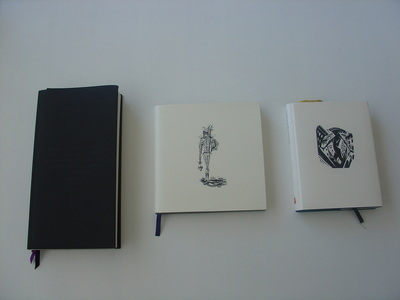
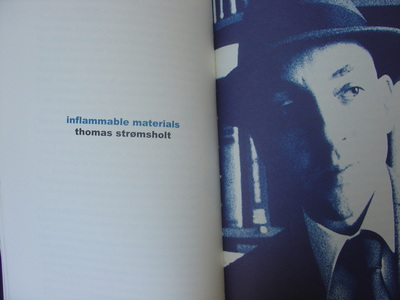
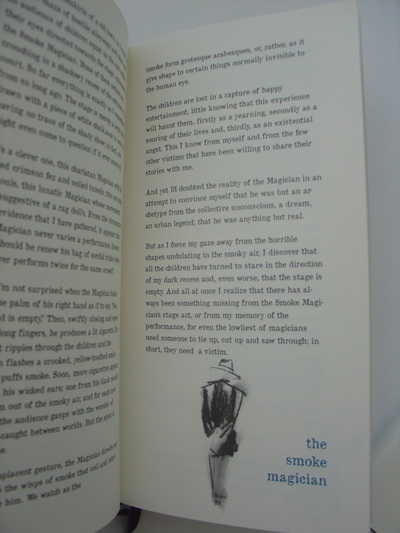
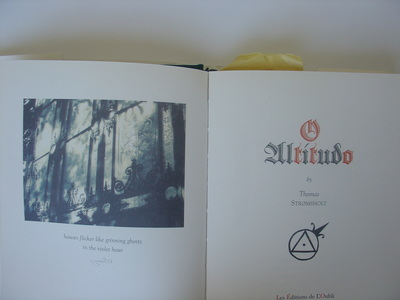
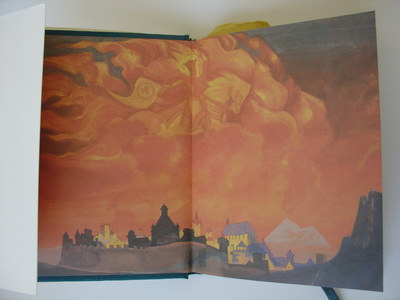
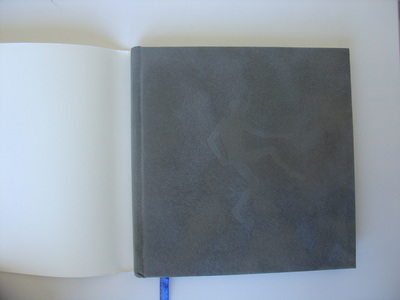
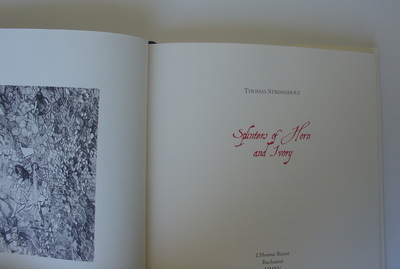
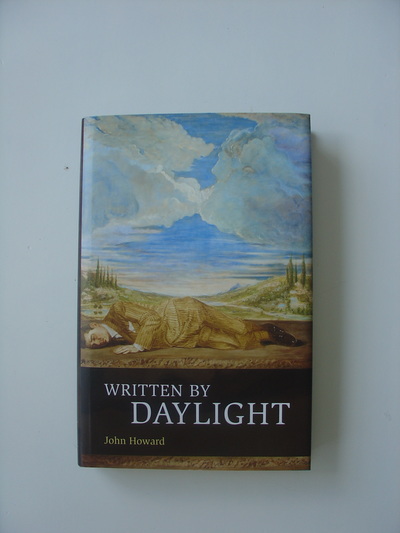
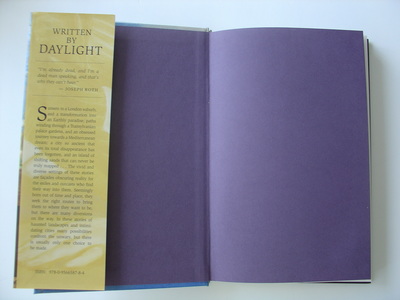
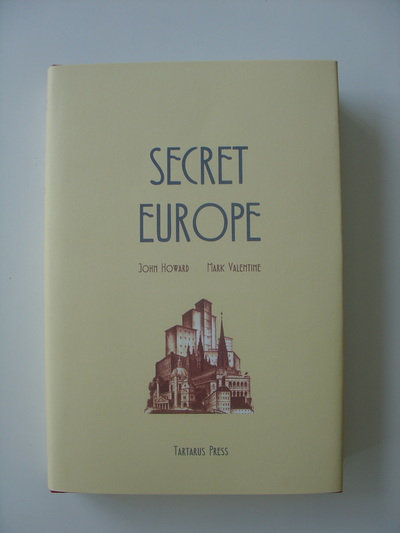
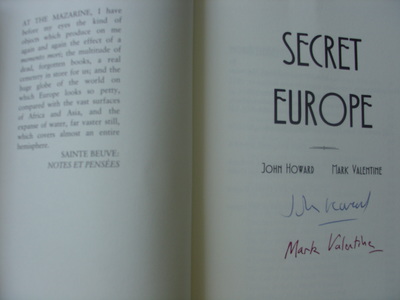
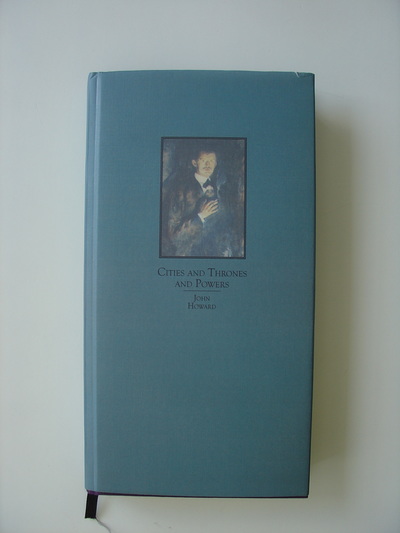
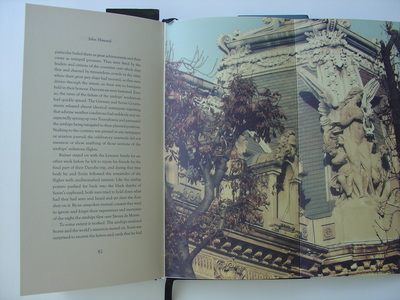
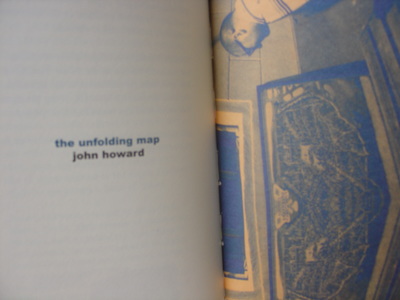
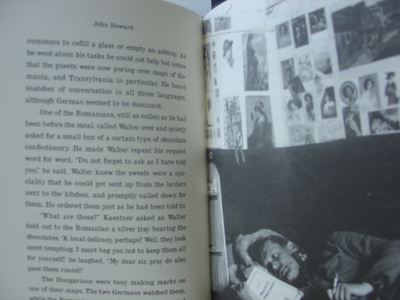
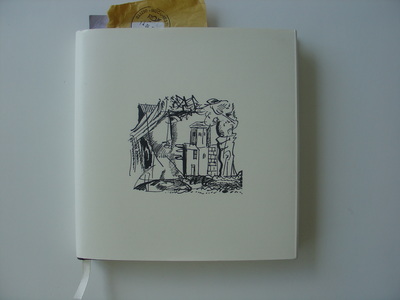
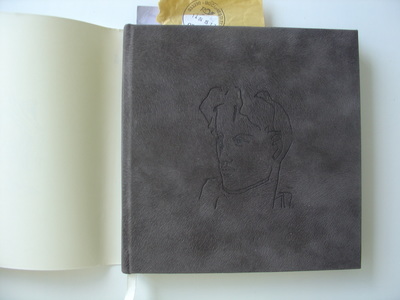
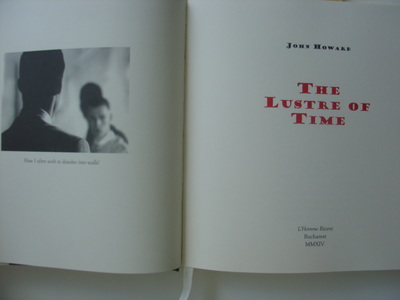
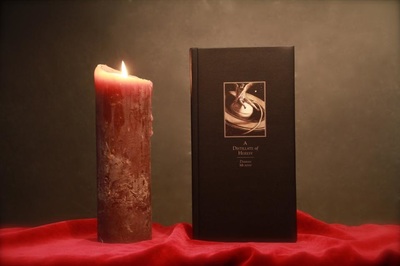

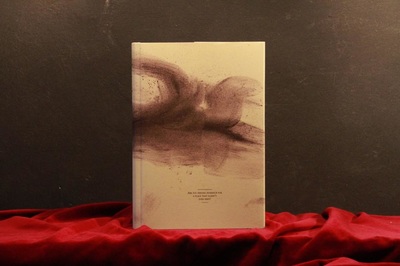
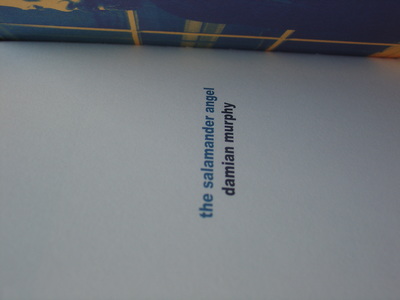
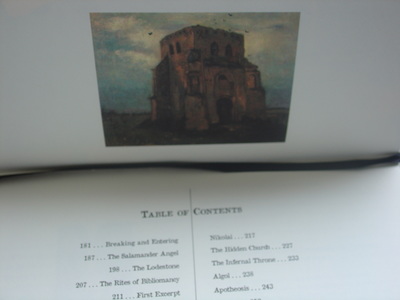
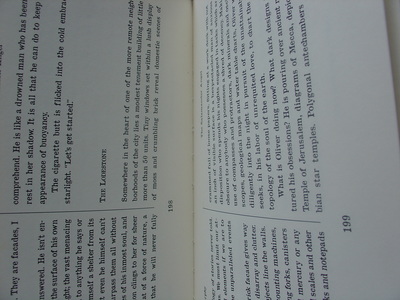
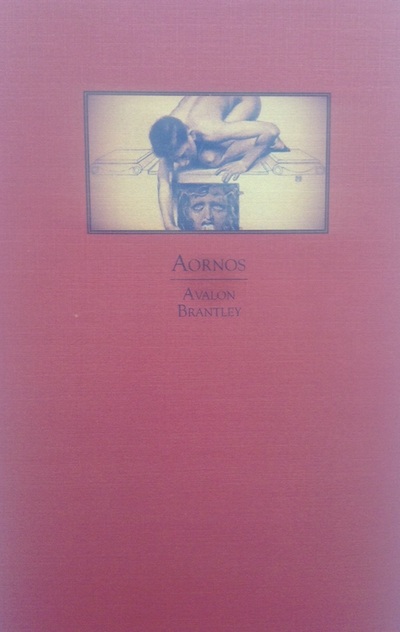
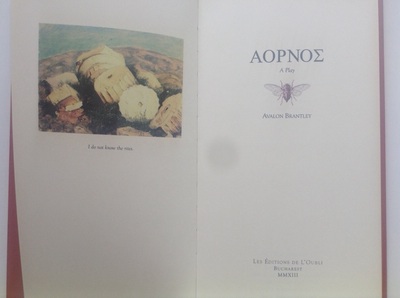
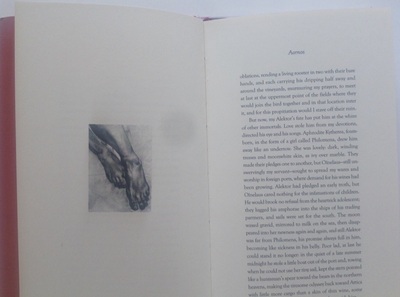
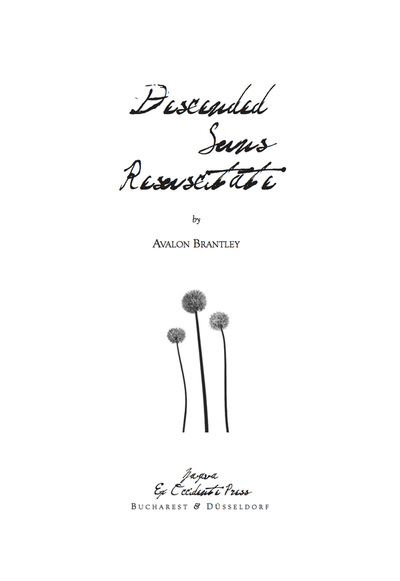
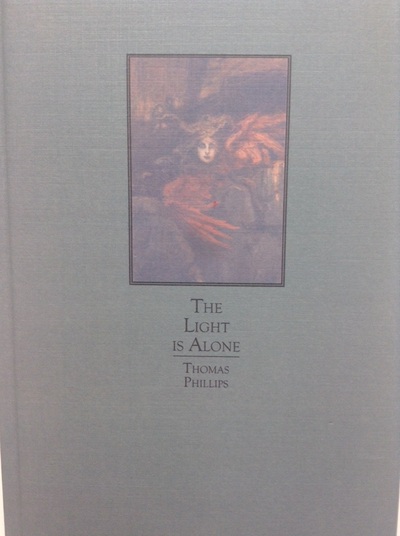
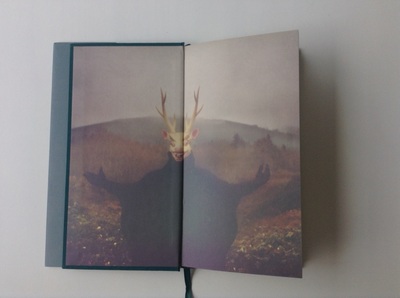
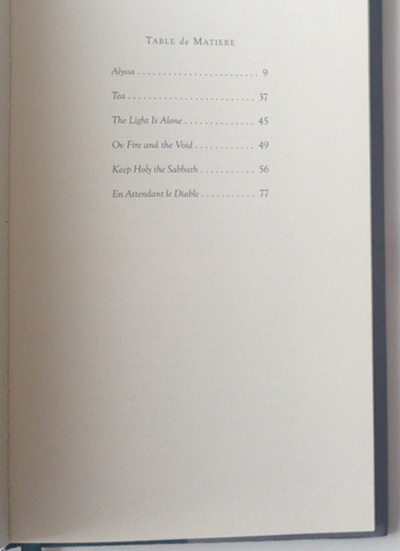
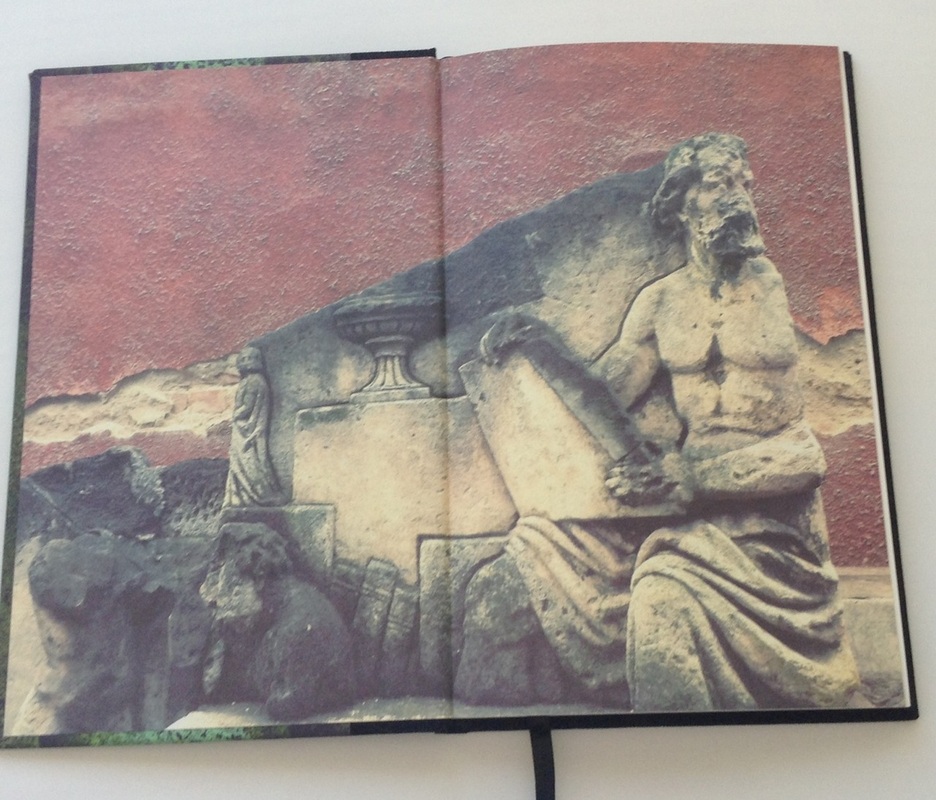
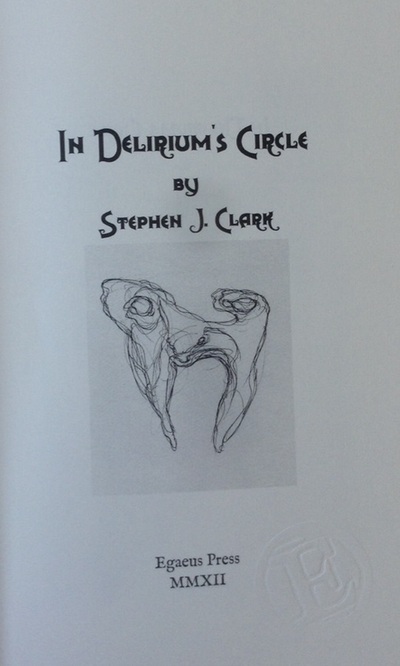
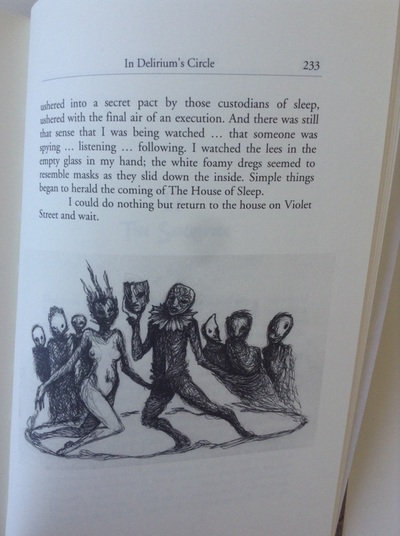
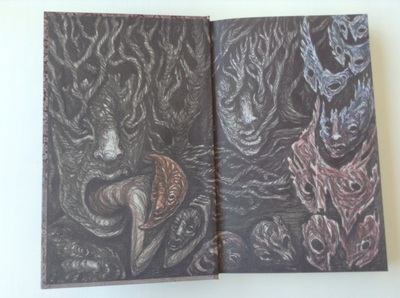
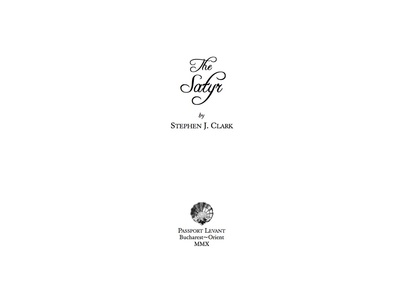
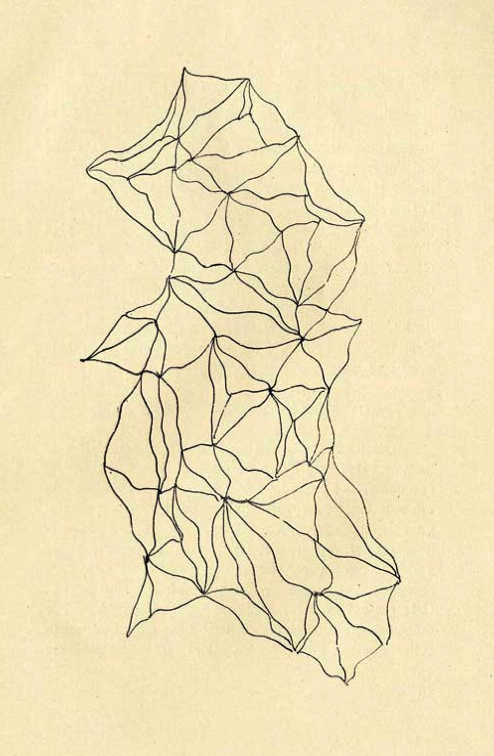
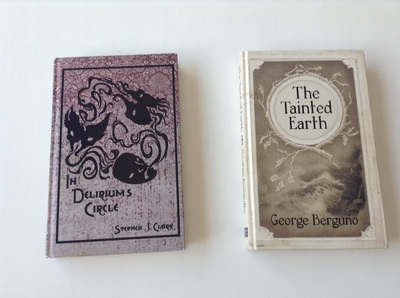
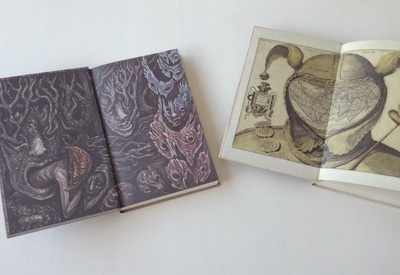
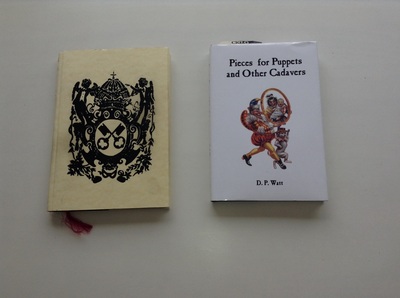
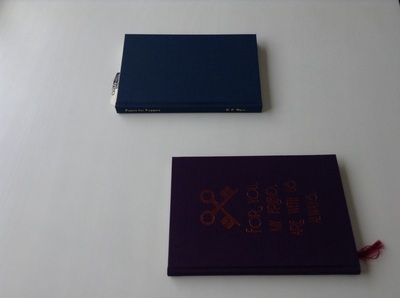
 RSS Feed
RSS Feed
